Seeds for Ground Cover Plants
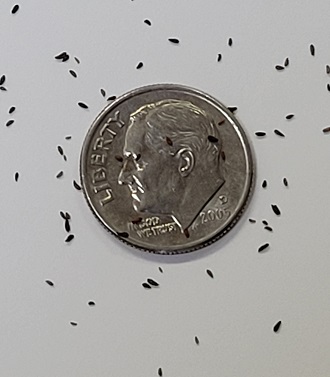
We find that sowing seeds in a tray or pot very thickly, allowing the germinated seedlings to almost be solid afte they germinate, then taking a tablespoon or small scoop, we can scoop out small plugs and they do very well. This saves a lot of time and cost on plug trays and works well for small and large areas. If you come up with a better way, please share it with us.
Keep in mind that many of these seed varieties are tiny ( think petunia or tobacco seeds where there over a quarter of a million seeds per ounce ) and starting them in a tray under a dome or covering the pot with plastic to maintain moisture is the best practical way to get good germination.
Visit our webpage Seed Starting Mix to learn to make the best seed starting mix for plugs or you can usually find a good mix at your local gardening center. You should not try to direct sow seeds outside, you will receive very poor results this way, and we will not warrant the seeds if this method is used, we will only warrant seeds if they are started as plugs.
Find your zone using your zipcode at Garden Web's Zone Finder.
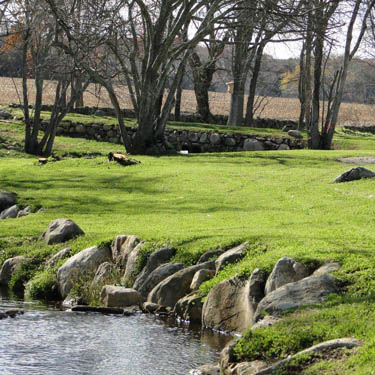
Of course, all at no cost to you, in terms either of money or of maintenance. Miniclover®, a very small leaved white clover, also produces stolons so that it can spread itself evenly over the ground. Adding just 2-5% of Miniclover® to the turf seed mixture will result in a much-improved lawn. It has all the benefits of regular clover just packed into smaller leaves. Miniclover's ability to pull nitrogen from the air and fix or convert it to a usable form by the plants makes it a great companion for turf grass varieties.
This is due to nitrogen fixation benefiting the turf grass plants as well producing a healthy, dense, and naturally fertilized lawn that will require very little fertilizer maintenance. The dense clover growth alongside the growth of the turf grass will force out existing weeds as well as prevent the establishment of new weeds. In addition Miniclover® is very tolerant to low mowing heights. Miniclover® is very low maintenance and it helps to carry this characteristic to what ever it may be planted with.
Miniclover® is adapted to a wide range of climatic and soil conditions. Miniclover® tolerates wet and partially shady conditions, as well as drought. However, it can only tolerate wet conditions as long as the area is not flooded for long periods.
The type of shade normally occurring in parks and on golf courses is not a problem for Miniclover®. Clover can also help aerate the soil, thus reducing concerns over soil compaction. Clover tolerates compacted soil better than lawn grass does. It has longer roots, enabling it to access water at deeper levels than most lawn grasses. If you're interested in cheap, low-maintenance alternatives to lawn grass, Miniclover® is the perfect solution and is easy to plant from bulk clover seeds. Add it to your existing lawn to improve overall lawn health or use as a complete lawn replacement.
If Miniclover® is not cut then the leaf size increases, the more it is cut then the smaller the leaf size. When Miniclover® is not mowed at all, the leaf size will be about 1/2 the size of White Dutch Clover. When it is mowed, new leaf heads form within a few days so it continually looks thick and lush. If it is not never mowed, it will get approximately 6 inches tall. If you mow it, it will want to quit growing just slightly taller than the height it was mowed at. For example, if you mow it at a height of 3 inches, it will head back out and quit growing at a height of approximately 4 inches. In other words, you can almost "train" its growing height with infrequent mowings. The turf is very dense, very lush, and very beautiful.
Mixed with grasses, Miniclover® grows around the grass plants and feeds them nitrogen. The nitrogen continues to be released into the soil during the growing season until the first night frosts occur. The nitrogen is therefore available when and where it is needed, and so there is no risk of leaching, nor is there a risk of fertilizer burning in the field. For turf managers, Miniclover® is the perfect permanent slow release N-fertilizer. It does not add any P or K, so if those nutrients are missing from your soil you many need to supplement them separately.
Additionally, Miniclover® is semi-aggressive species, filling in gaps quickly. It competes well with weeds, thus reducing the need for herbicides.
Miniclover® is not as aggressive as White Dutch Clover. This type of clover can completely take over a lawn whereas Miniclover® will not do that. It is just aggressive enough to fill in bare spots where traditional grass may not repair for months.
As nitrogen is continually available during the growing season there is a reduced presence of disease like red thread, rusts and Fusarium. Miniclover® fertilizes the grass and helps to maintain its healthy appearance. In essence, adding Miniclover® to a lawn acts as a constant drip feed.
Miniclover® seeds are now pre-inoculated and coated. The coating material contains the inoculant to ensure your clover gets off to a great start. The coating material also helps retain moisture which improves the viability of each seedling. When Miniclover® or Microclover® is planted in warm temperatures and kept moist, you will have sprouts typically within 5 - 7 days.
Four ounce package will cover 500 square feet for overseeding existing lawn
or 250 square feet of new planting for lawn alternative.

Alleviate Flooding
Following a heavy rainfall a green roof will initially retain more rain than a conventional roof. This minimizes the initial heavy runoff, which can cause localized flooding and put pressure on the sewage system. The remaining water then drains off more slowly, allowing more rain to remain in the natural water cycle and less in the sewage system.
Noise Reduction
The soft layer of sedum blanket growing on a green roof has the affect of absorbing sound, as opposed to hard conventional roofs which can reflect it. In an already noisy urban environment this is certainly beneficial. The same layer improves the buildings sound insulation properties, reducing sound pollution within the building.
Thermal Insulation
The addition of a green roof layer to a property increases its thermal insulation properties, making it warmer in winter, cooler in summer and reducing energy costs.
Natural Habitat for Animals and Plants
Green roofs can help compensate for the loss of green surfaces, sacrificed to building developments. This helps to provide an environment for the development of wildlife, especially bird, plant and insect life, increasing the biodiversity in our towns and cities.
Improving Building Aesthetics
The clever use of a green roof can help a large and small buildings blend into a surrounding green landscape, minimizing the impact it has on the immediate environment. Green roofs can be used to soften ugly flat roofs on extensions, garages, sheds etc. helping them blend more easily into their surrounding environment. Where a building is located in a more urban landscape, the addition of a green roof can introduce a very welcome green interlude in a heavily built up area, where green spaces are few and far between, substituting in some way for the loss of a previous greener landscape.
Perennial Sedum plants have been one of the best choices for green roofs due to the fact that it is an extremely adaptable plant. Its special properties include:
Low Maintenance once established sedum forms a tightly knit sedum carpet, which allows little room for the development of weeds and can be left largely unattended. This makes it perfect for use on sedum roofs.
Low Growing sedum is a low growing plant, which generally reaches a height of 2 inches to 5 inches (up to 12 inches when in flower). It does not become overgrown and does not require regular cutting or pruning ideal when used on a sedum roof.
Colorful Hues by mixing a number of different varieties of sedum together as in this Sedum Roof Garden Mix, the sedum turf will have a beautiful mix of colors (greens, yellows, reds and purples) and textures. As an evergreen it continues to provide a changing display of color throughout the winter months. When used to create a sedum roof it will provide a beautifully changing display throughout the year.
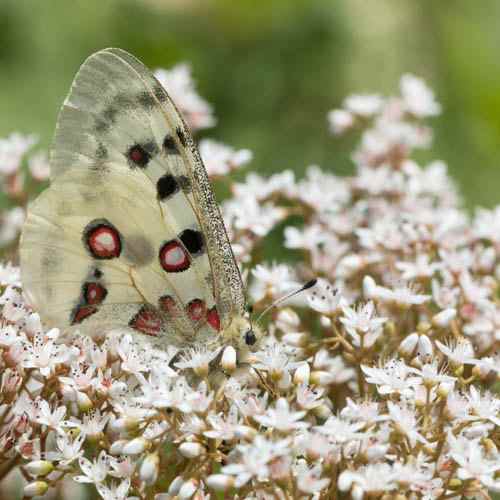
Best suited for zones 4-9.
Sedum has tiny seeds which should be mixed with fine sand for an even sowing. For best results, sow seeds indoors 6-8 weeks before the last frost is expected. Use small pots or flats and sterile starter mix. Pre-moisten the starter mix and sow Sedum seeds on the surface. Press the seed into the moistened soil, and do not it. Keep the Stonecrop seeds moist but not saturated until they germinate.
Water from the underside of the pots or use a spray bottle and lightly mist the seeds. Plant the Sedum seedlings outdoors once sufficient growth has been made. Established plants can be divided every 3-4 years for best performance.
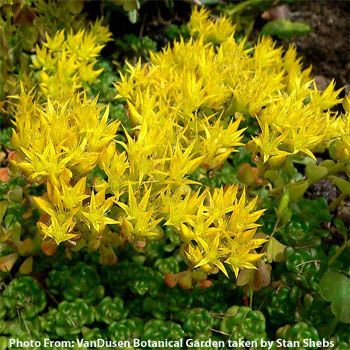
Features succulent foliage that forms little rosettes. In the fall, the foliage can turn shades of orange or red. The bright yellow flowers appear in early summer on stems. It is lovely spilling over the edge of rocks, or planted along walkways or in-between stepping stones. Grows about 2" tall.
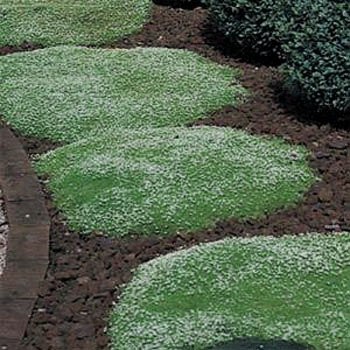
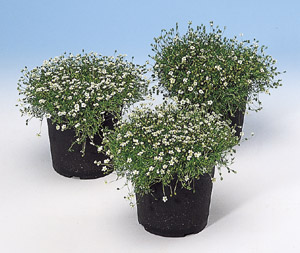
The very tiny Irish Moss seeds create a moss-like, emerald-green foliage that forms a compact 1 to 2 inch tall carpet. This ground cover is excellent for planting between flagstones. Grown as a lawn substitute, it creates the effect of a moss-covered meadow. Irish Moss is very soft to walk on barefoot, and it has a slightly spongy feel to it. Hardy for zones 4-10.
Sow seeds in starter flats, press the tiny seeds into soil but do not cover. Kept at 64-72F, germination is in 14-21 days.
Transplant into the garden 6-9 inches apart. Seeds can be direct sown into the garden ( but best started inside ) or in-between stones. The seeds must be kept moist continuously. It will be adaptable to mostly sunny locations in cooler climates or partial shade in warmer climates. Irish Moss ground cover needs moisture retentive, gritty, well-drained soil. The plants are hardy above -30F degrees.
Important Note: These are very tiny seeds, even smaller than tobacco or petunia seeds. They are easily germinated by following instructions above, but they must be started inside and transplanted outside as "plugs". These will not germinate well outside, except in some instances where they are sowed between flagstones.
These pelleted seeds make for easy sowing and germination were smaller amounts of seeds are needed. Each pack contains over 150 pelleted seeds. Seeds are shipped in protective plastic vial.
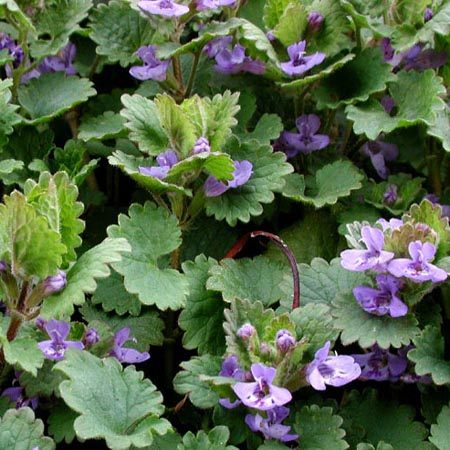
Deer eat both the green top and the radish itself. Daikon Radish is also used in soil improvements as well as cover crop. Daikon Radish is very aggressive and will germinate and thrive in most soils types around the world. Great for no till food plots!
One of the biggest benefits behind Daikon Radish is its potential as a source of forage for both deer and cattle. Because the Daikon Radish is so hardy, it can thrive in almost climate and will continue to thrive even as Winter temperatures set in. This makes Daikon Radish a popular form of cattle forage during the Winter months as well. During the Summer, it's just as popular a source of forage because of its aggressive growing tendencies, and how quickly it sprouts new leaves after being consumed.
Daikon Radish have been a popular as a form of sustenance for residents of Southeast Asia for thousands of years. Thanks to its mild taste, it has found new audiences across the world in more recent years. Daikon Radishes can be stored for weeks, even without their leaves, if they are stored in a cool place. In Japanese cuisine, they are often pickled. Obviously the large root leaves behind a significant cavity in the soil, making it an optimal option for breaking up soil, including heavy clays, for those who wish to plant new crop options in years to come. Studies have shown that this taproot leaves more than 6 to 10 inches of effect on soil compaction. The word "Daikon" actually translates to "big root" in Japanese!
Cooking with Daikon Radish: Noodles: Try shredding daikon into "noodles" and adding to soups, stir-fries, or as the base for pasta sauce. Use a vegetable peeler to shave the long root into thin strips, then quickly cook into stir-fries, etc.
Salad: Peel, then grate, julienne, dice, or slice to add crunch to your favorite salad. Many like to sprinkle mine with Ume Plum Vinegar when using raw.
Stew: A somewhat traditional option, try adding big chunks of dakion radish to hearty stews. Try a Beef Stew with Red Wine & Herbs or Beet Bourguignon.
Roasted Like any root vegetable, daikon is great roasted. Use a basic recipe, then branch out to Miso Maple Roasted Vegetables.
Slow cooked baking pan or slow cooker with carrots, onions, garlic, low-sodium seasonings, low-sodium vegetable broth, lean meat. Turn on low and let the juices and flavors start mixing for an all-in-one meal.
Health benefits: Boosting digestive health. Assists in detoxification — As a diuretic, daikon may help stimulate urination. Weight management — Daikon is a low-calorie and low-cholesterol vegetable, yet still high in fiber
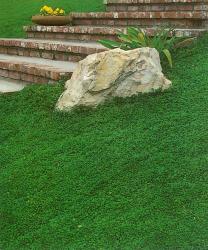
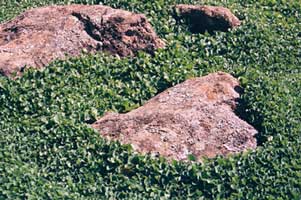
It grows very close to the ground, (usually not over 2 inches tall) and is a warm season fast growing ground cover. It is adapted to warmer climates, but will retain its striking green color during winter temperatures as low as 20 to 25 degrees Fahrenheit with only slight leaf browning. Dichondra has broad, almost circular leaves (looks similar to clover) and when mowed low establishes a thick dense carpet look. Dichondra is now used in many ground cover situations where normal grasses may not do as well.
It has a bright green color and a very good feel underfoot. Dichondra is highly resistant to diseases and will grow in partial shade to full sun. Beautiful in landscaping areas of no maintenance where adapted, and does not need to be mowed.
When used in lawn situations it can be mowed for an even, smooth finish. Dichondra Repens is commonly called Kidney Weed, Dichondra Pony Foot, or Lawn Leaf. It grows so easily from ground cover seeds that it can be used as a lawn alternative to create a Dichondra Repens lawn.
Best for zones 7-11.
Click here for Detailed Growing Instructions for Dichondra
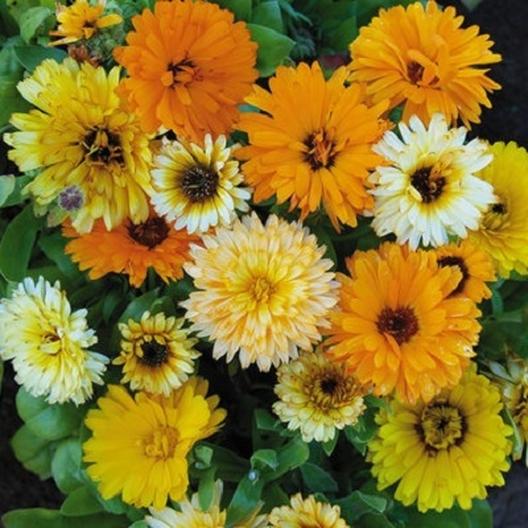

Flowers also look beautiful in containers or hanging baskets. The trailing nature of the Nolana plant allows it to spill over the sides. The flowers are white, ruffled and trumpet-shaped and perform beautifully all summer long. Give a sunny spot with very well-drained, moderately fertile soil. The plant requires little care and it drought resistant.
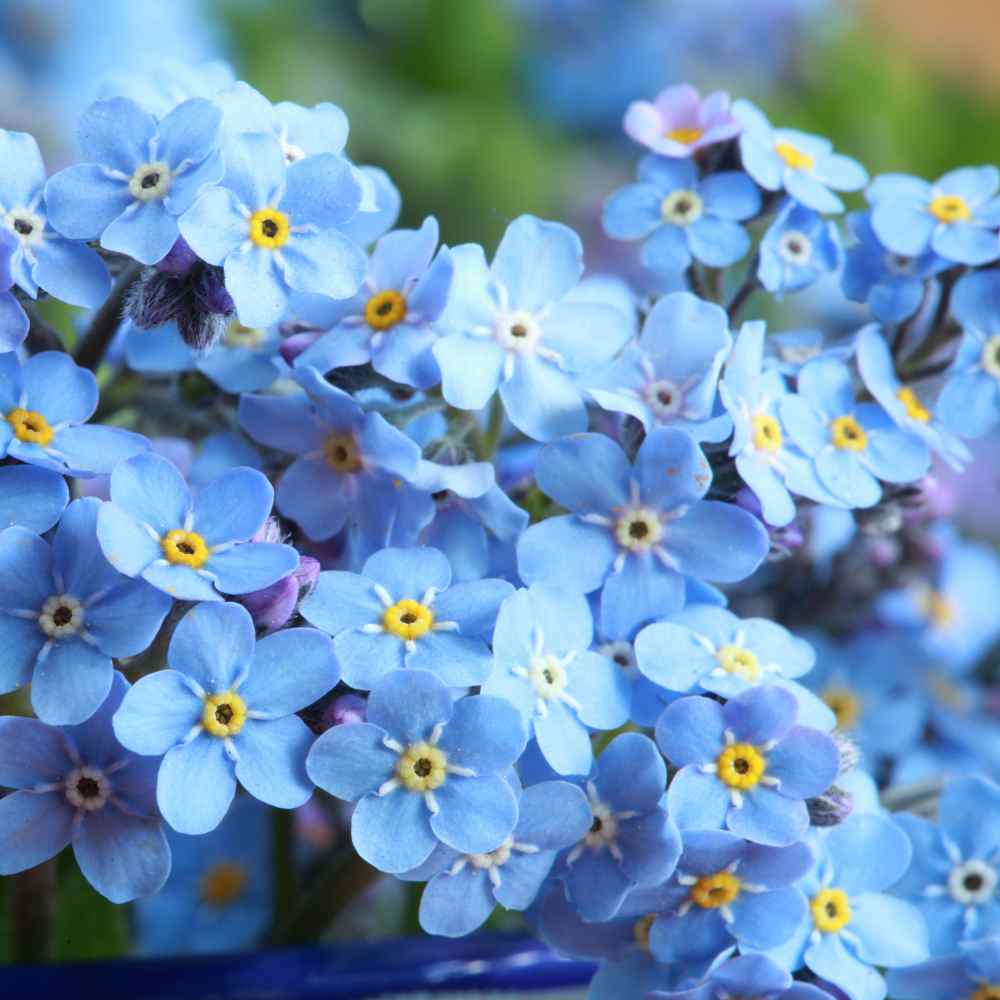
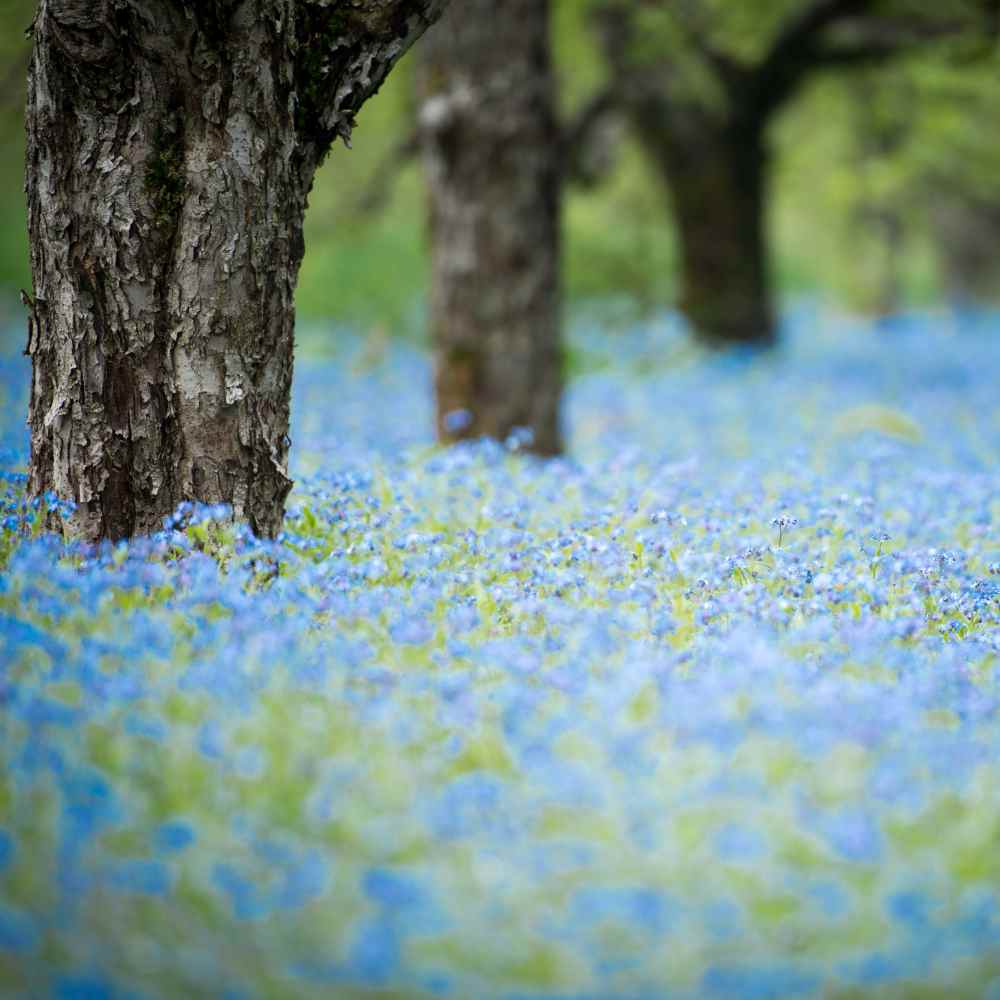
Myosotis Sylvatica seeds will grow in all regions of North America and is very easy to establish. Blue Forget Me Not flowers will grow in sun or shade and will start to bloom early. In nature, this species grows wild in stream-beds and wet woodlands. So, in your garden, it prefers lots of moisture, and has good shade tolerance. Forget-me-not is low-growing and makes a nice ground cover plant as well as edging for the front of the border or even in containers.
How to grow Forget Me Not seeds: Myosotis Sylvatica seeds can be started either indoors or directly outside in a prepared seedbed. Indoors, in the late winter, sow Forget Me Not seeds in starter flats, and press the flower seeds into the soil and lightly cover. For directly sowing outdoors, prepare a seedbed by loosening the top several inches of soil and weeding. The Forget-Me-Not seeds can be sown when frosts are still possible. Thin the seedlings to 9 - 12 inches apart. Forget-me-not plants are liberal self-sowers. To encourage reseeding, leave spent flowers on the plant well until after they have faded. The Forget Me Not flower seeds will drop and produce more ground cover plants the next spring.
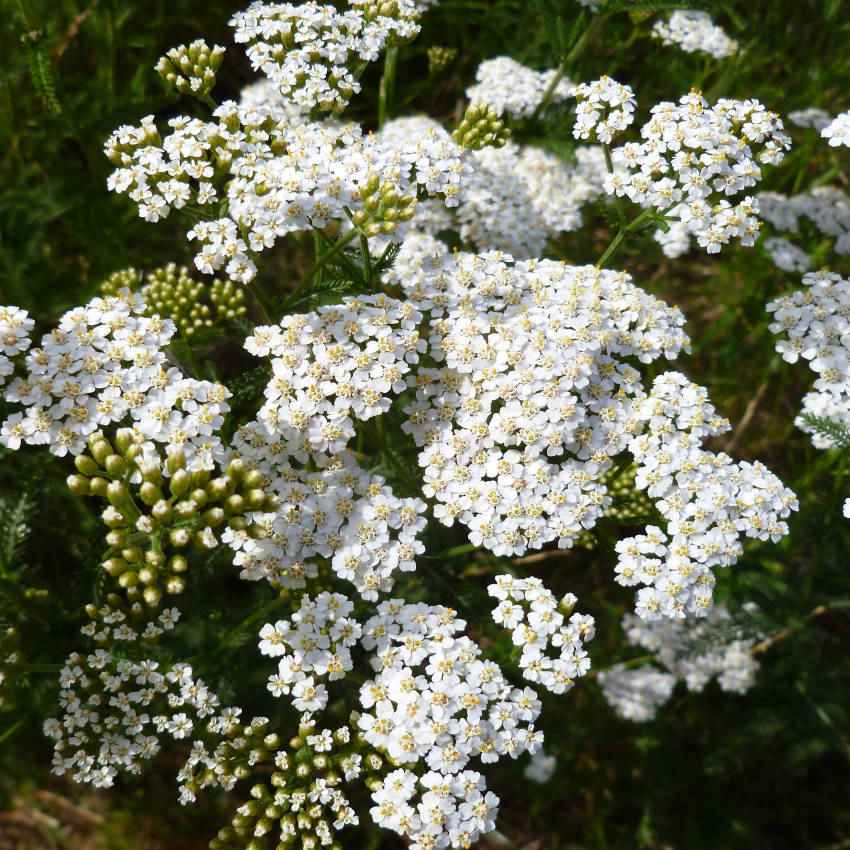
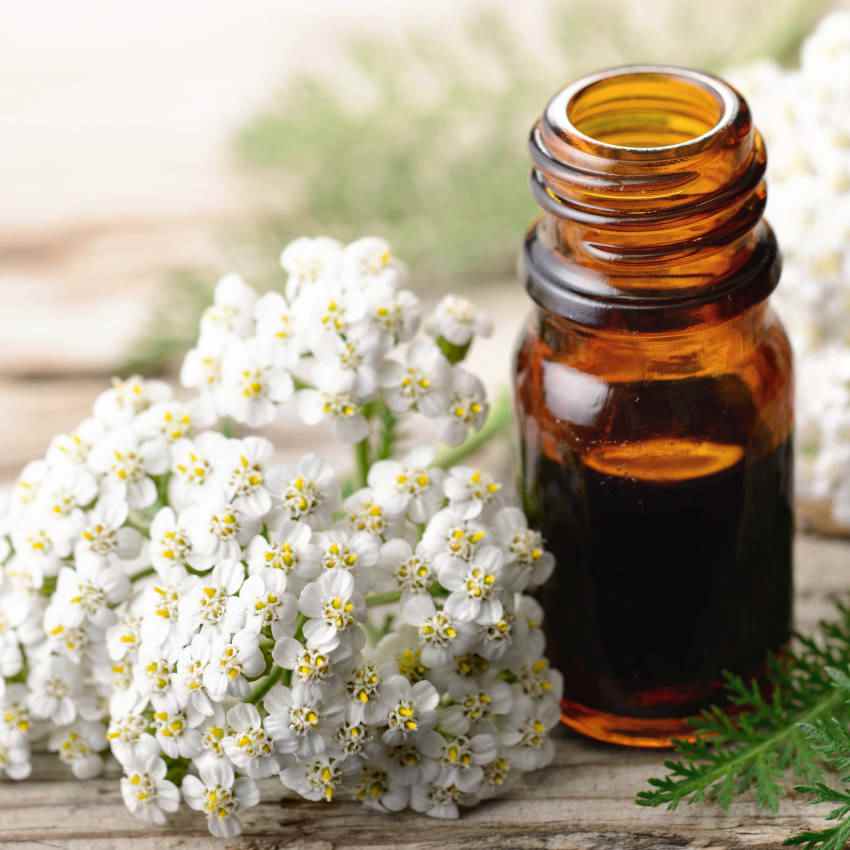
Yarrow or milfoil is a leading backyard medicine plant. A ready first-aid treatment for wounds and nosebleeds, it has larger uses as a circulatory system remedy that both stops bleeding and moves stagnant blood, preventing and clearing blood clots. It tones the blood vessels and lowers high blood pressure. Yarrow is beneficial for a wide range of menstrual problems, and is a first-rate fever herb, used as a hot tea to induce sweating.
Yarrow is a famous wound and fever herb, yet today it can pass unnoticed except as a lawn weed. The legendary Achilles used yarrow as a field dressing for his soldiers’ wounds in the Trojan War, and the plant is named for him.
It's many uses include herbal plant, cottage gardens, wild gardens, meadows, prairies and naturalized areas. Good fresh cut or dried flower.
A perennial growing 24-36" tall, hardy for zones 3-9.
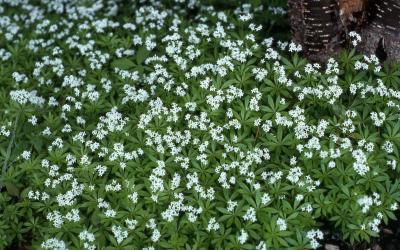
It does make an excellent ground cover plant due to its low-growing nature and spreading habit. Historically, the herb seeds were grown for an aromatic plant that was used as an air freshener and placed in linen closets.
Plants are also natural insect repellents and gardeners often grow them around ornamentals like roses to keep the pests away. As a medicinal herb, Sweet Woodruff was used to treat numerous ailments and was often used for the treatment of wounds.
Plants emit a strong odor of freshly mown hay when foliage is crushed or cut. Aromatic intensity of the foliage increases when dried, thus dried leaves are popularly used in sachets or potpourris.
Plants have also been used commercially in perfumes. Leaves are sometimes used to flavor teas and cold fruit drinks. Leaves are also used to make May wine, a punch made from white wine flavored with woodruff, orange and pineapple. Woodruff comes from Old English meaning wood that unravels, in probable reference to the creeping rootstock of the plant. Formerly known as Asperula odorata. Cannot ship to CN, MA, NY, PA, VT
Sweet Woodruff seeds germinate best after a period of cold temperatures. Some gardeners will dampen peat moss, mix the herb seeds into the peat moss and then place the peat moss/seed mixture in the refrigerator for 2 to 4 weeks before sowing. Others will sow the herb seeds in a starter tray, water, seal the tray, and place it in the refrigerator. Finally, the last method of sowing would be to directly sow the Sweet Woodruff seeds outdoors in a prepared seedbed in late winter or first of spring while frosts are still expected.
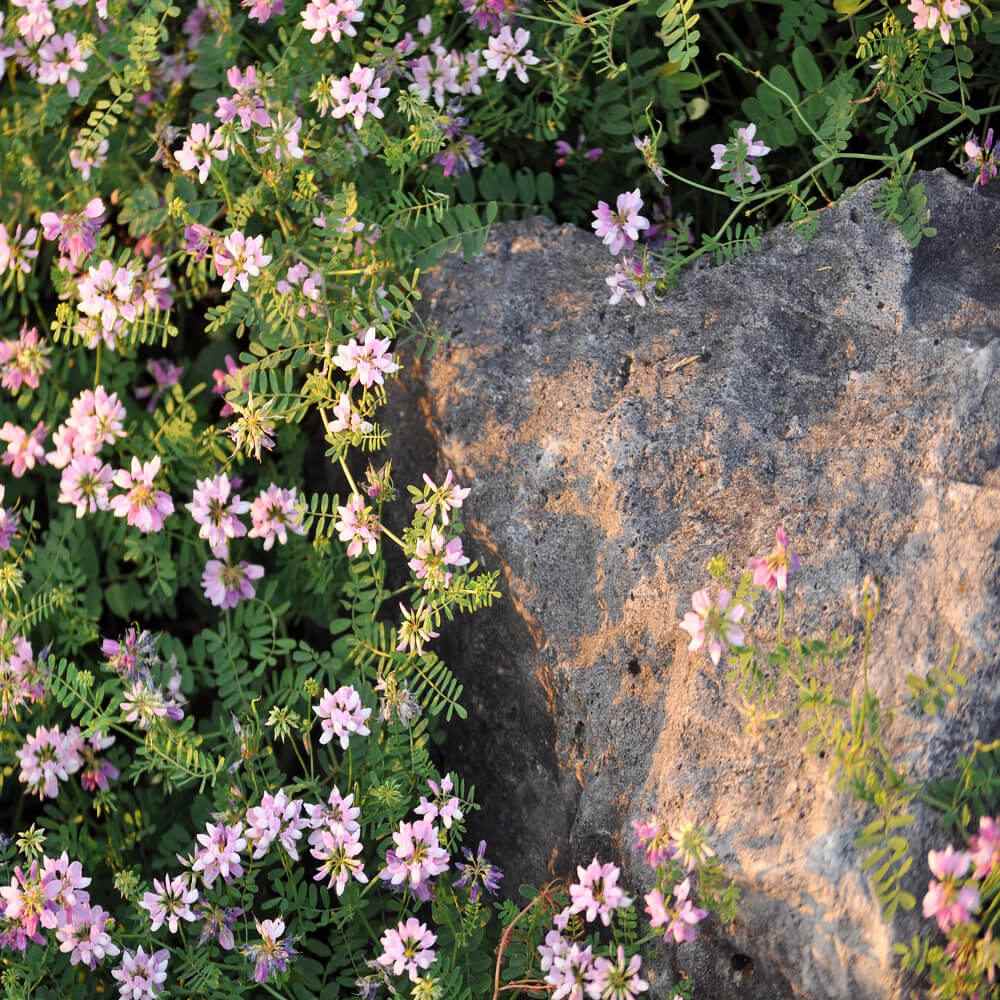
It has moderate shade tolerance, but high drought tolerance. Crown vetch is one of the easiest, fastest, economical and beautiful ways to cover bare ground. You will often see it blooming along the side or center divider of highways, particularly on steep banks or slopes. A superb way to prevent soil erosion, choke out weeds, and beautify the landscape with minimal effort or cost.
Crown vetch quickly spreads by sending out shoots above and below ground getting roots up to 12 inches deep in to time soil permitting. Plants produce billowy, green foliage growing around 20 inches tall with masses of white to pink blooms from June until frost. Dense flowers clustered atop the green foliage makes it an attractive display. Even though each bloom is only 1/2 inch wide, even a small planting creates nearly a solid carpet of pink all summer long!
Crown vetch is fairly slow to germinate; therefore, if planting at the end of summer or early fall allow 10 weeks for establishment before first hard frost date. A perennial for zones 4-10. Grows about 20 inches tall.
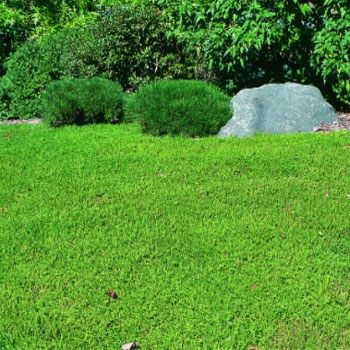
It is a soft to walk on, evergreen grass substitute for many people or the perfect ground cover. It can take quite a bit of foot traffic as it is almost as wear tolerant as grass. Its small, vibrant green glabrous foliage will get inconspicuous lime-green to white flowers on it, but they are barely visible and do not attract bees. Many people report never seeing Herniaria Glabra flower at all which makes it nice as there is no flower clean up.
Herniaria Glabra is a lovely bright green creeper which spreads effortlessly in all directions filling up to two feet per plant! It is not fussy about soil and will happily grow in poor soil and gravel.
This low growing ground cover plant of about 3 inches has one long tap root (as opposed to many surface roots like a Creeping Thyme) which makes it extremely drought tolerant. Green Carpet can grow in full sun or shady locations. Known to be nearly indestructible, it is an excellent choice for growing between flagstones, growing as a lawn substitute, or a ground cover. The tiny leaves create a dense evergreen carpet, becoming bronze or red colored in winter adding even more interest.
Does best in zones 6-10. Very tiny seeds,about the size of petunia seeds.
Start seeds inside as plugs is recommended. Surface sow seed, do not cover Soil Type: Well-drained, can be nutritionally poor soils, adaptable to various soils, pH 5.5 - 7.0.
Sowing Rate: 3 - 5 seeds per cell or approximately 500 seeds covers 10 square feet.
Moisture: Keep seeds moist until germination.
Important Note: These are very tiny seeds, even smaller than tobacco or petunia seeds. They are easily germinated by following instructions above, but they must be started inside and transplanted outside as "plugs". These will not germinate well outside, except in some instances where they are sowed between flagstones. We cannot warrant thes seeds if sowed directly outside.
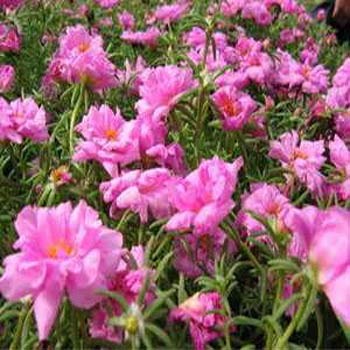
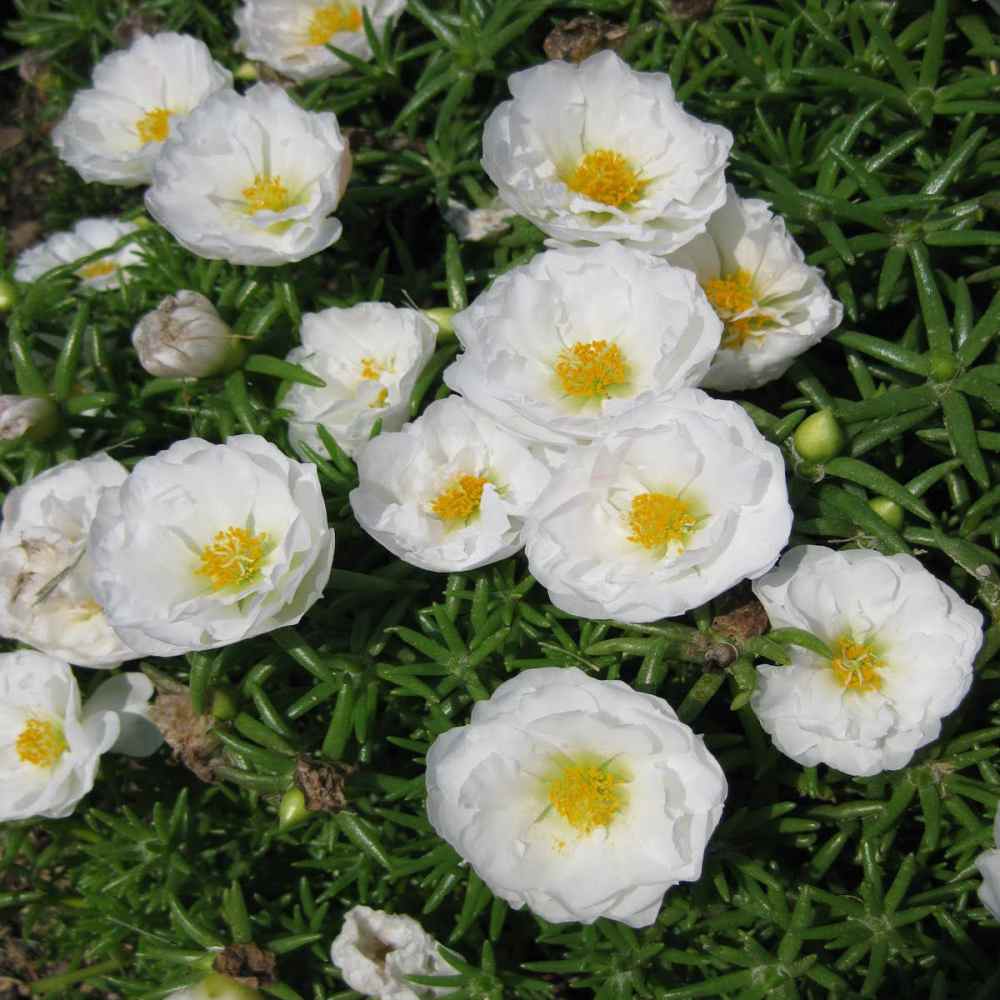
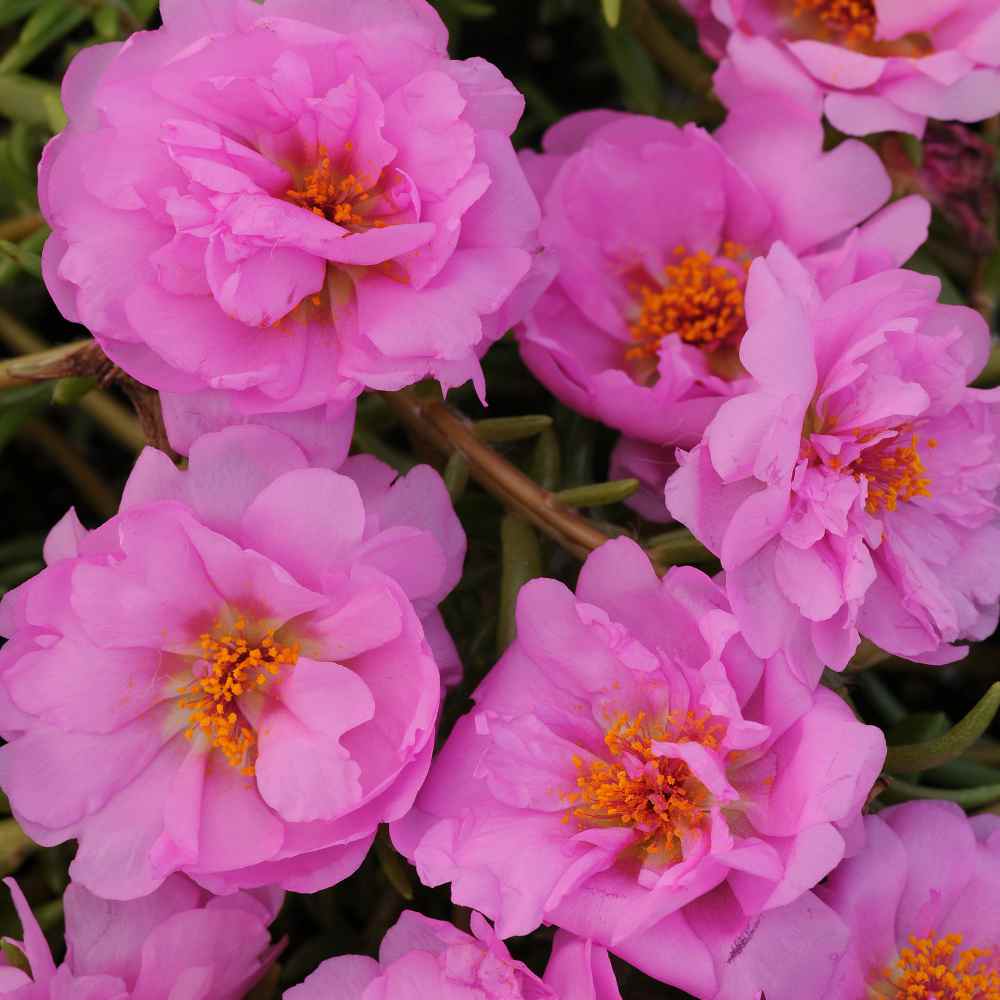
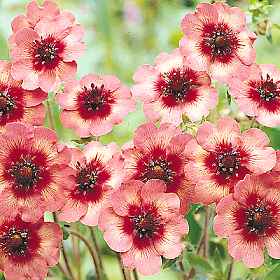
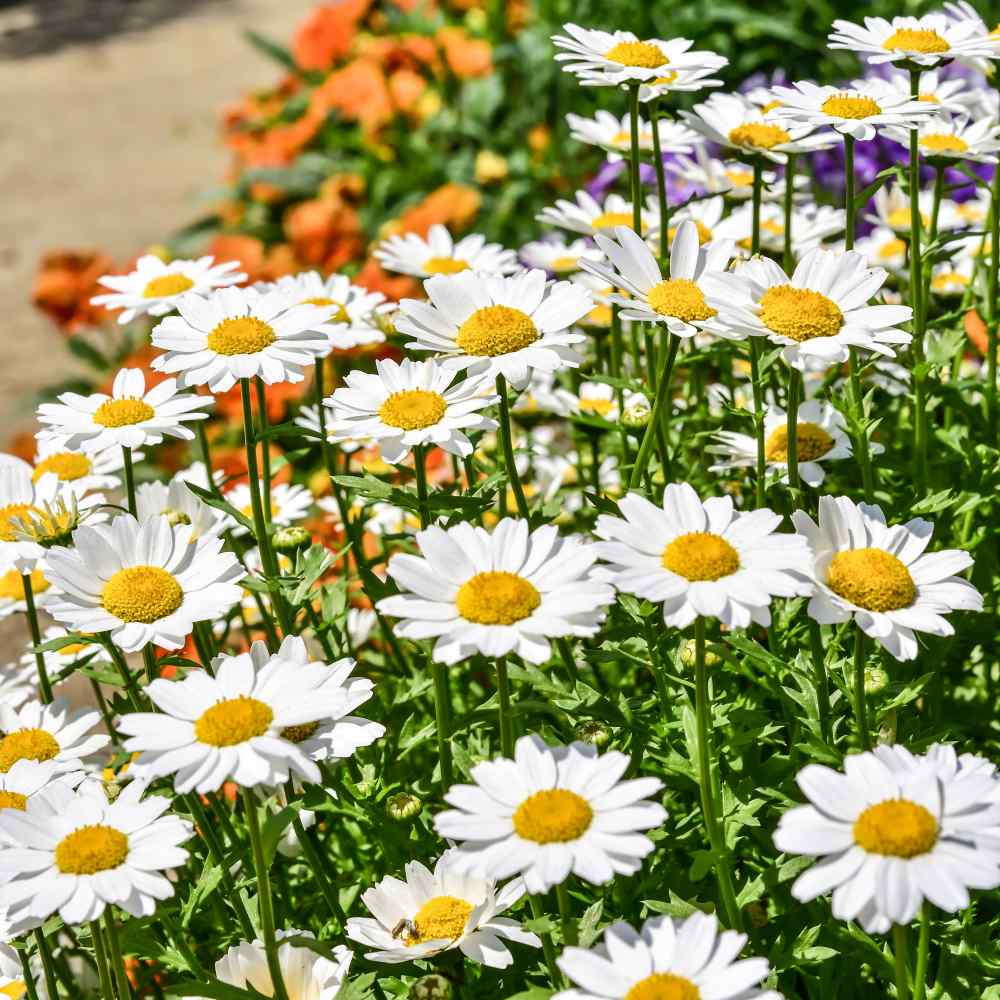
Butterflies love to visit these sweet little flowers! Chrysanthemums can be liberal self-sowers, and Creeping Daisy will drop its own flower seeds giving you brand new Creeping Daisy plants the following year. Creeping Daisy is technically a perennial, but only in frost free zones 9 and 10.
Creeping Daisy seeds can be sown directly outside in the spring after frost season is over. In a prepared seedbed that is weed free, so the flower seeds about 12 inches apart and press the Chrysanthemum seeds into the soil. Keep the seeds moist until germination occurs. Creeping Daisy care includes an application of all purpose fertilizer each month throughout the growing season and pinching back spent flowers to encourage continued blooming.
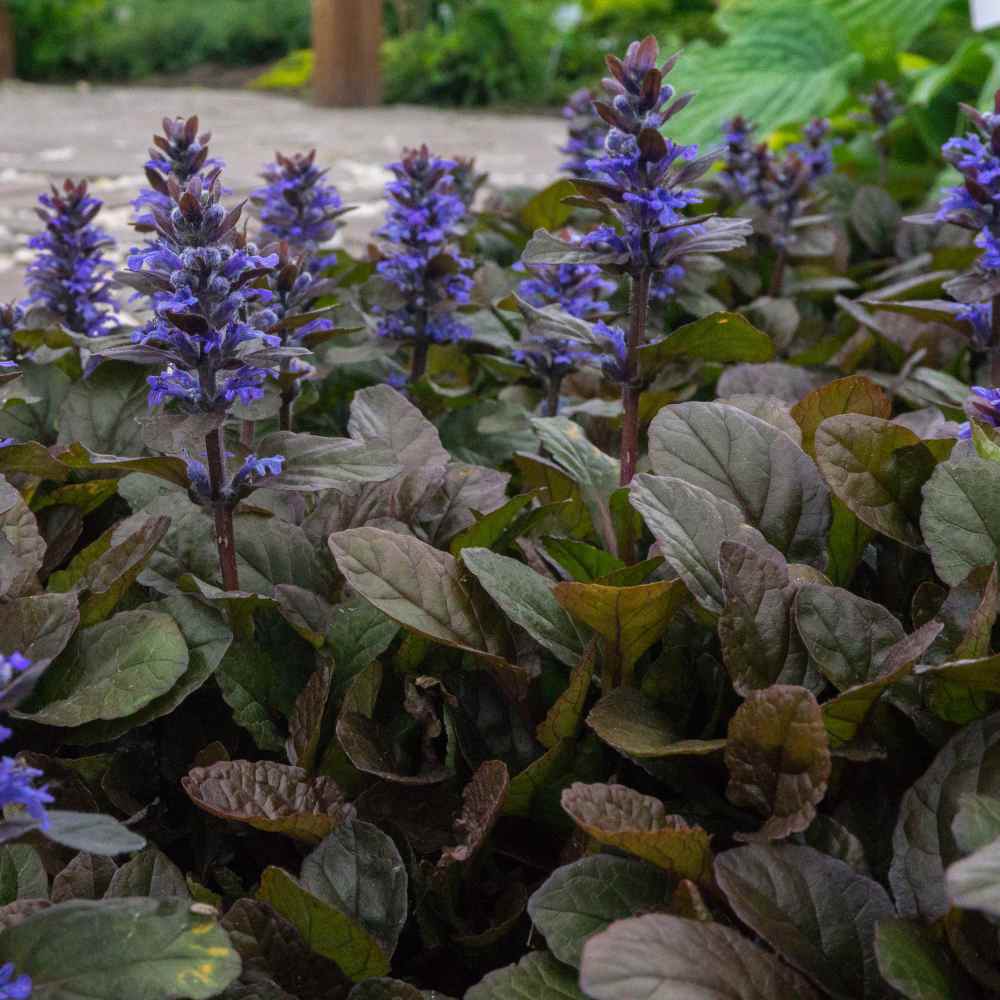
It is noted for the striking range of foliage colors and textures. The rich foliage and spring flowers make this a popular choice for replacing turf grass, especially under trees and other areas where mowing (such as over roots) can be dangerous and areas where grass will not grow.
Best used for edging, as a ground cover, or beneath trees or larger shrubs, infrequent foot traffic is tolerated. Attracts butterflies, one of the few groundcovers that will grow under walnut trees.
You will need to start seeds inside, and transplant outside as "plugs".
Start seeds inside in small pots or cells, about 3 seeds per cell or pot. After germination, transplant outside, spacing about 9 inches apart. Normal germination time is about 21-28 days.
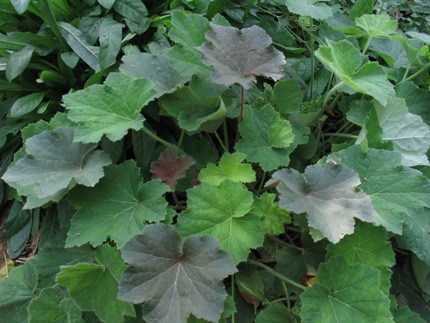
Its fountains of tiny, bright white panicles are set off by velvety, rounded, light green leaves. Its low-mounding form makes it excellent for planting end masse to create ground cover. Drought tolerant and deer resistant.
Space plants approximately 12 in. to 16 in. apart for best results. For best results, grow in well-drained soil. Blooms in mid to late Summer. Reaches standard mature height of 18 in. to 24 in. Tiny seeds must be started indoors. Zones 3-8
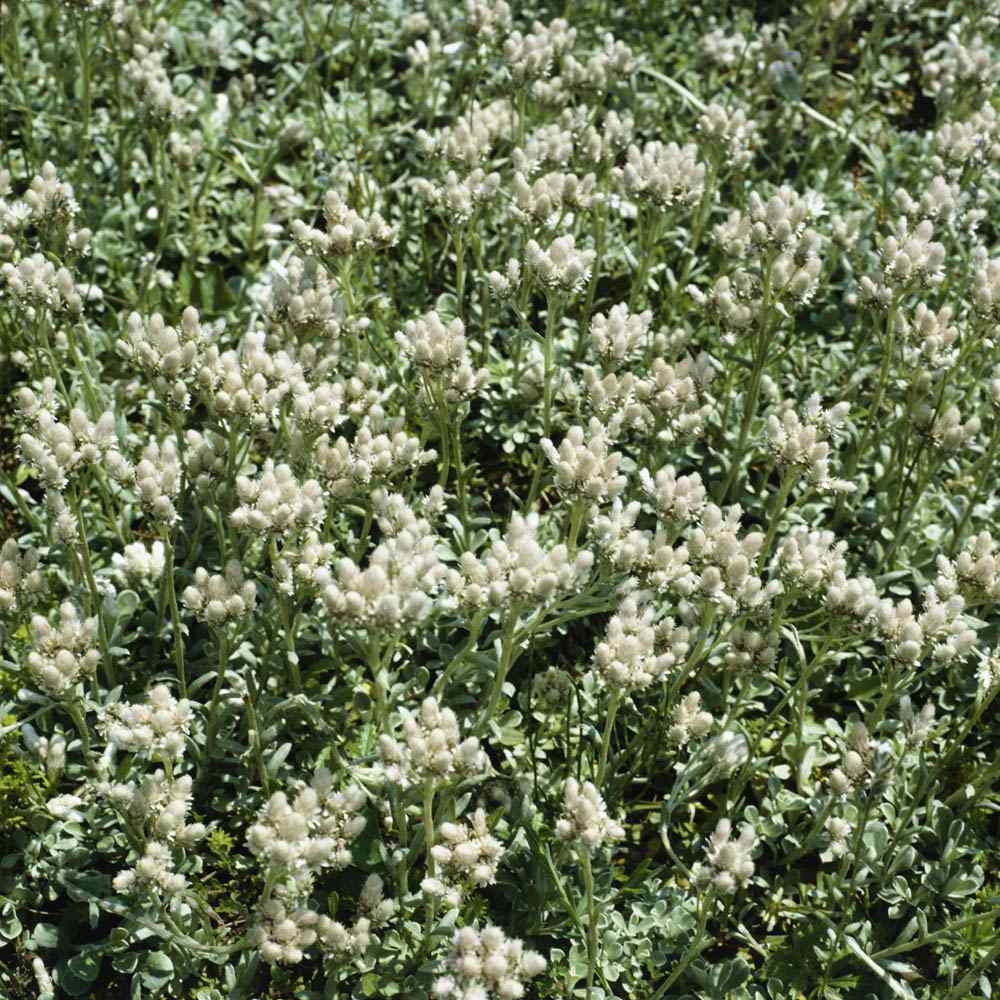
Antennaria works great in many sunny or partial shade locations including: rock gardens, mass ground cover plantings, in between flagstones, or on top of rock walls. Simply plant the Antennaria seeds where you want a beautiful carpet of drought tolerant ground cover plants with red blooms. Antennaria seeds can be started indoors 6 - 8 weeks before the end of frost season and then transplanted outside once temperatures are consistently warm. For areas with long growing seasons, Antennaria ground cover seeds can be started directly outside in a prepared seedbed. Press the Pussytoes seeds into the soil but do not cover them, and maintain moisture until germination occurs. Antennaria plants can be divided and moved to other locations. To keep the Antennaria looking its best, cut or mow off flower stems after blooming.
Perennial, hardy for zones 5-9, grows 4 inches tall.
You will need to start seeds inside, and transplant outside as "plugs".
Start seeds inside in small pots or cells, about 10-12 seeds per cell or pot. After germination, transplant outside, spacing about 12 inches apart. Normal germination time is about 42-70 days.
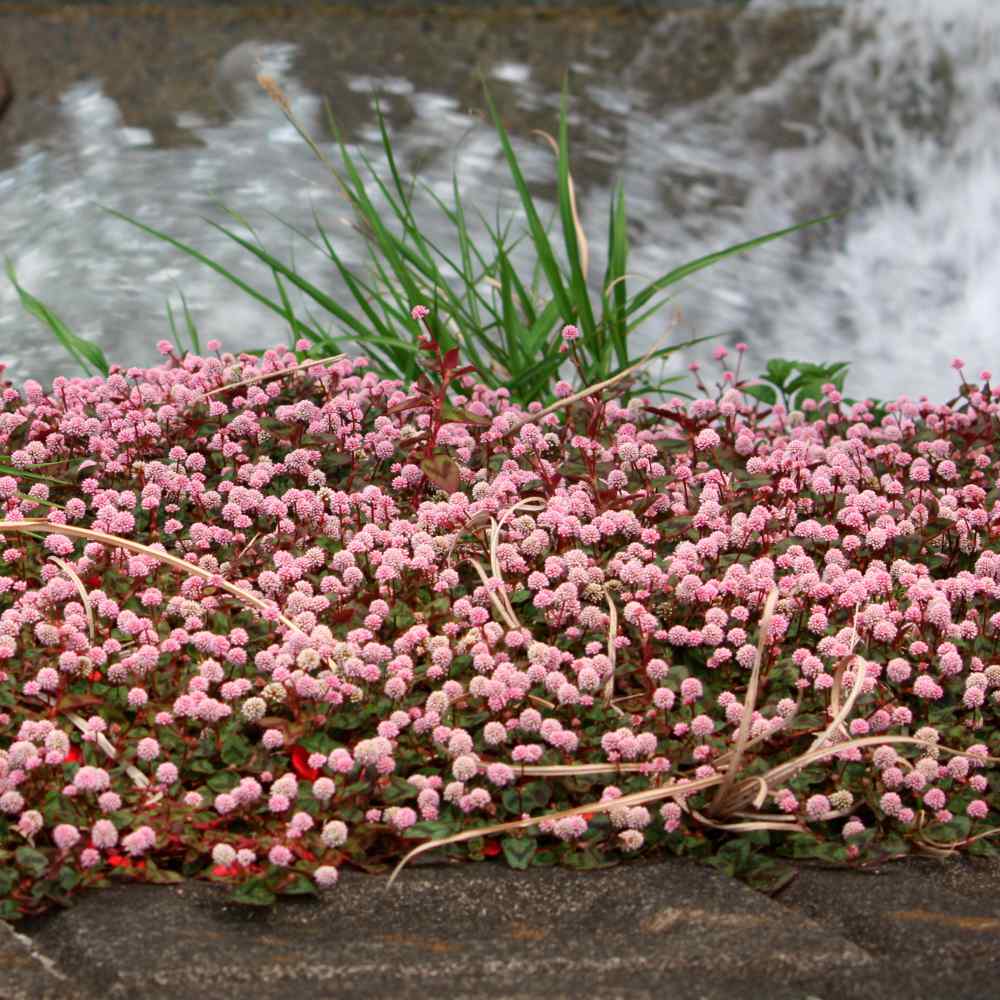
It's many uses include containers, baskets, edging the front of the border or as ground cover plants. It looks especially lovely in raised beds or containers where it can spill over the edges. Pinkhead Smartweed is praised for its burgundy tinted foliage and small coral-pink round flower heads. It is a tough, easy-to-grow ground cover for sun or shade with a long bloom season.
Start seeds indoors in late winter for areas with a short growing season. Use quality seed starting soil and small pots. Press the ground cover seeds into the moistened soil and lightly cover. Maintain moisture until germination occurs. After danger of frost has passed, transplant the seedlings outdoors after hardening the ground cover plants for 10 days or more. For areas with a long growing season, start the ground cover seeds directly outdoors after danger of frost has passed. Prepare a weed-free seedbed and lightly cover the seeds with soil after broadcasting.

California Bluebells are a beautiful self-sowing wildflower, naturally reseeding each year when seeds fall onto bare soil. This makes them a simple, low-maintenance choice for gardeners, letting you enjoy their stunning blue blooms year after year without replanting. It's an easy way to add lasting beauty to your garden with minimal effort.
California Bluebell is often grown in bee and butterfly gardens as well as xeriscape landscaping. Phacelia Campanularia is also known as Desert Bluebells, and the plant can grow in sandy soils and desert-like climates, but it is also adaptive to other climates.
It offers versatile uses, making them perfect for a variety of garden settings. Whether you’re planting them in borders, cottage gardens, rock gardens, or as part of a wildflower meadow, these vibrant blooms thrive in many environments. Their stunning flowers also make excellent cut flowers, adding beauty both outdoors and indoors.
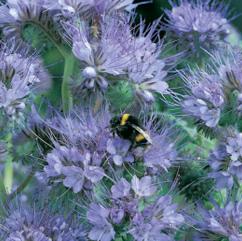
Produces an abundant quantity of nectar which butterflies and bees find hard to resist, this is an excellent flower for planting alongside vegetable gardens to attract bees and benificial insects .A hardy annual, native to California but has naturalized throughout the western United States. The flowering portion of the stalk is curled, slowly unwinding to reveal lavender colored flowers at maturity. The stamens radiate outward, twice as long as the petals, giving the plant an unusual appearance. Prefers full sun in various soils.
Seedman Basic Info:
Grows about 12 to 24 inches tall, will germinate in about 15-60 days depending on soil and weather conditions, germinates best if soil temperature is in the 60-70°F range.
Cover seeds about 1/16" deep, blooms from April to July.
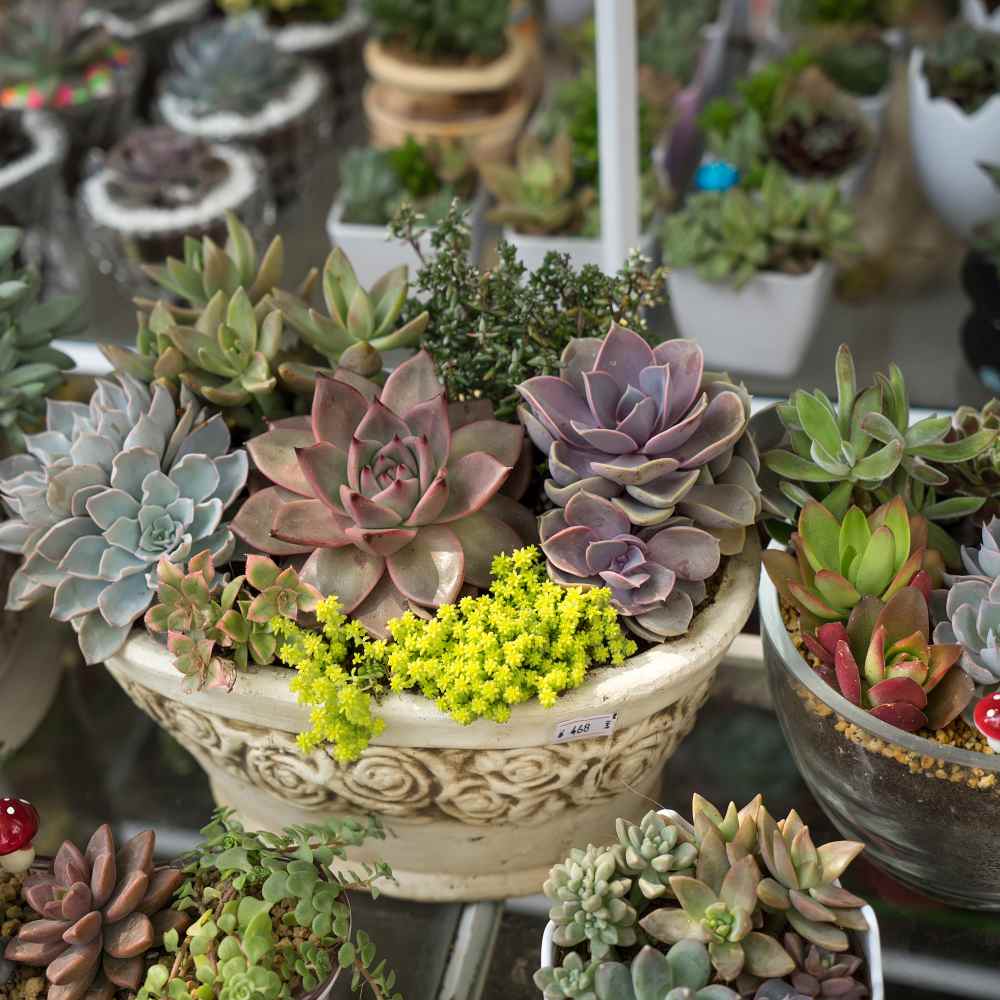
Grow Sempervivum succulent plants in full sun to partial shade and in well-drained soil. In the South, Sempervivum Hens and Chicks can profit from partial shade. The rosettes die after flowering but are replaced by new rosettes on lateral runners. Sempervivum is an old-time favorite used in concrete planters on either side of the front entry or as a great ground cover plant. Great in window boxes or niches. They require little water or attention to thrive.
These outdoor succulents are known for their charming appearance and extreme durability. They resemble an unfurled rose with accenets of colors and can form dense mats that accent gardens and arrangements. Perennial for zones 3-10.

Very sweet fragrant flowers have fringed petals of red, pink, purple or violet. Vase life of 7-10 days. Will bloom in as little as 70 days from seeds.
A perennial for zones 3-8.
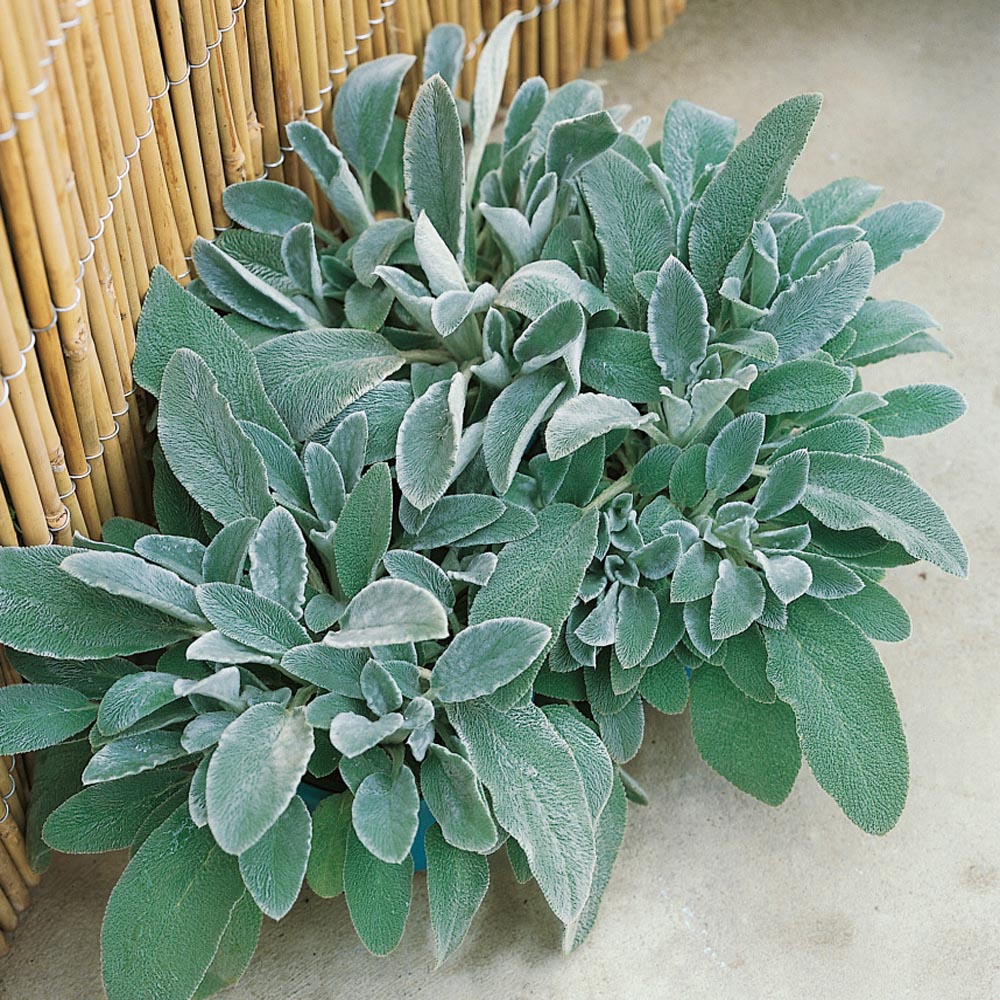
Lamb's Ear attracts bees, butterflies, and hummingbirds with its purple flower spikes in late spring and early summer.
Lamb's Ear is very adaptive. It is drought tolerant enough for a rock garden setting, and it is also a good choice for growing in hot, humid summers where some plants can lose their form. Lamb's Ear ground cover makes a perfect companion plant for a rose garden.
Grow this hardy perennial flower in full sun to partial shade and in well-drained soil. It is a reliable performer that needs little care. Lamb's Ear uses include edging the border of the garden or as a general ground cover. It is a ready self-seeder, and also spreads by roots making it ideal for ground cover. A perennial for zones 4-8, grows about 16 inches tall.
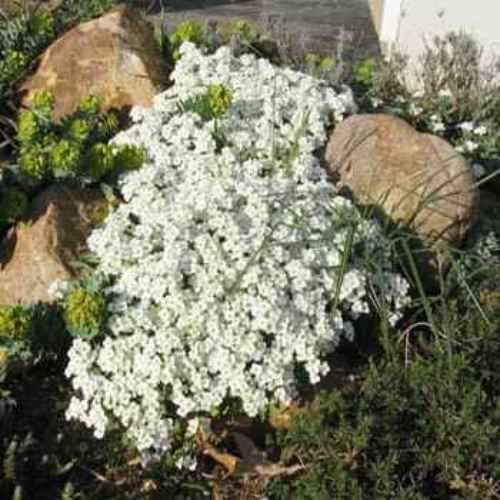
Rock Cress perennial ground cover establishes well from ground cover seeds. It works well as a ground cover for slopes. It is fairly drought tolerant once it is established. Use Rock Cress on a ledge of rock or a stone wall. As it matures and spreads, it will cascade over the stones. Rock Cress has attractive silvery-green evergreen leaves which hug the ground, about 6 - 8 inches in height, occasionally jumping up to 10 inches. In climates with mild winters, the leaves of this flowering ground cover plant hold their looks into winter. Trim back the Arabis Alpina plant after blooming to keep it neat and tidy.
A perennial for zones 4-8.
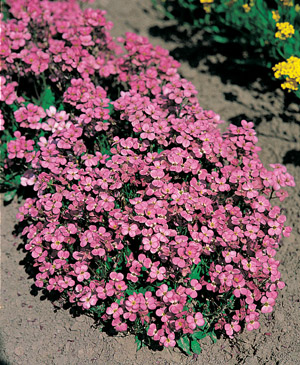
You will need to start seeds inside, and transplant outside as "plugs".
Start seeds inside in small pots or cells, about 3-4 seeds per cell or pot. After germination, transplant outside, spacing about 8 inches apart. Normal germination time is about 21-28 days.
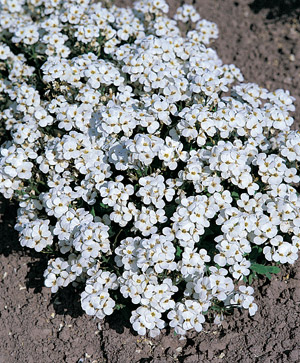
Has attractive silvery-green evergreen leaves which hug the ground, about 6 - 8 inches in height, occasionally jumping up to 10 inches. In climates with mild winters, the leaves of this flowering ground cover plant hold their looks into winter.
Trim back the plant after blooming to keep it neat and tidy. Perennial, hardy to zone 3, grows 6 inches tall.
Start seeds inside in small pots or cells, about 3-4 seeds per cell or pot. After germination, transplant outside, spacing about 8 inches apart. Normal germination time is about 21-28 days.
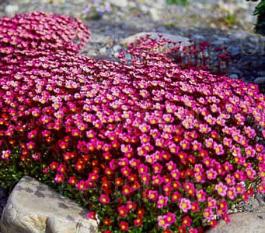
Also, known as Mossy Saxifrage or Purple Robe ground cover, Saxifrages grow well in containers, beds, rock gardens, and anywhere a low-growing, spreading ground cover plant is desired. Mossy Saxifrage plants prefer well-drained soil and full sun to partial shade conditions. Purple Robe does not do well in the hot humid areas. It is both deer and rabbit resistant.
Grows about 6 inches tall, a perennial hardy for zones 4-9. Very tiny seeds! About the size of petunia seeds.
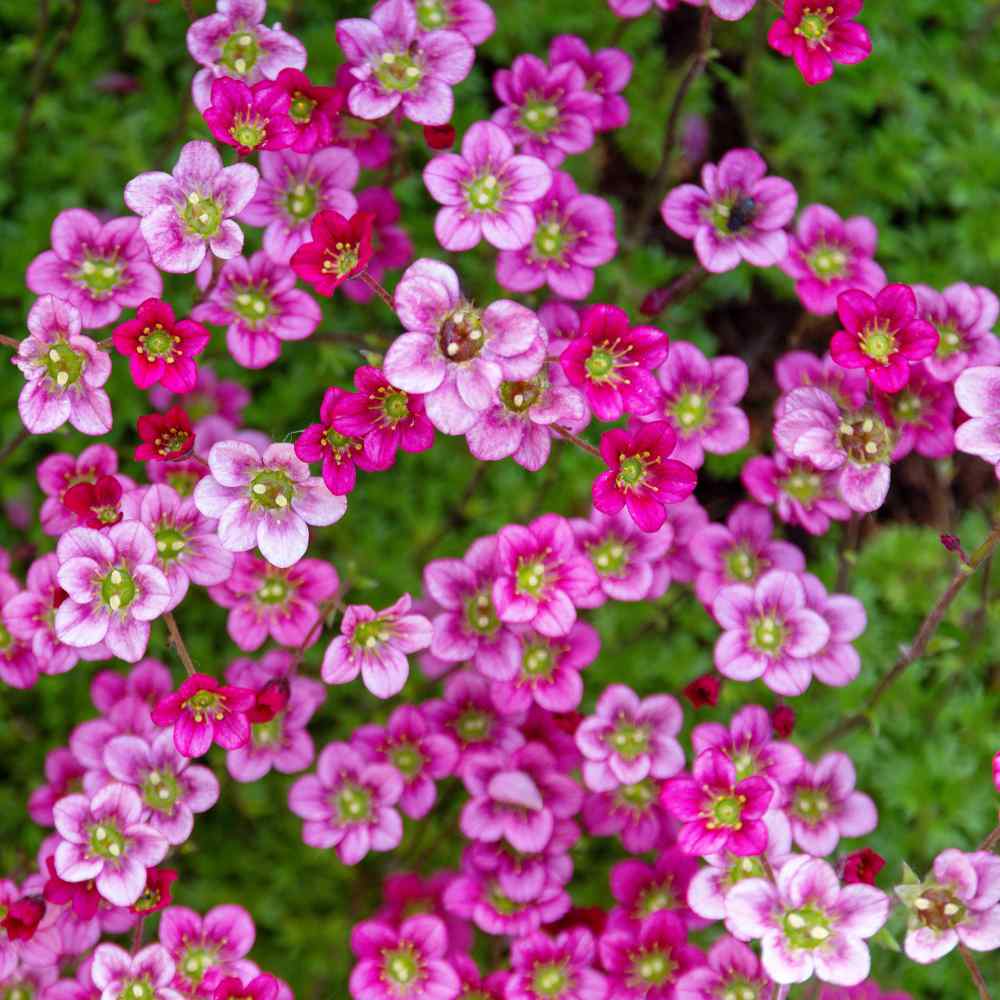
Prefers cool growing conditions and does not tolerate drought or hot humid weather. In warmer zones, make sure it gets afternoon shade. Saxifraga care includes trimming back the stems once their flowers fade to neaten the ground cover plants, but no other trimming is needed during the year. Rose Saxifraga will self-seed but not to the point of crowding.
Grows about 6 inches tall, a perennial hardy for zones 4-9.
Very tiny seeds! About the size of petunia seeds.
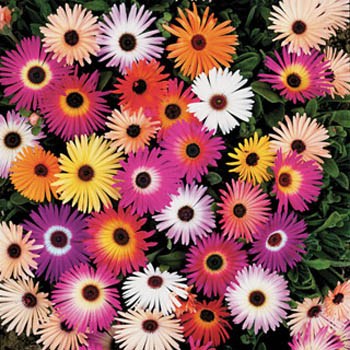
This mix produces free-flowering, drought-tolerant, easy-to-care-for plants that thrive in the hot, dry soil that other plants simply will not tolerate. These bright colored daisies typically are 1 1/2 inches across with dozens of long, slender petals jammed around a black eye. They face straight up on plants that just reach 4 - 6 inches tall. You can not find an easier flowering ground cover plant to establish from ground cover seed.
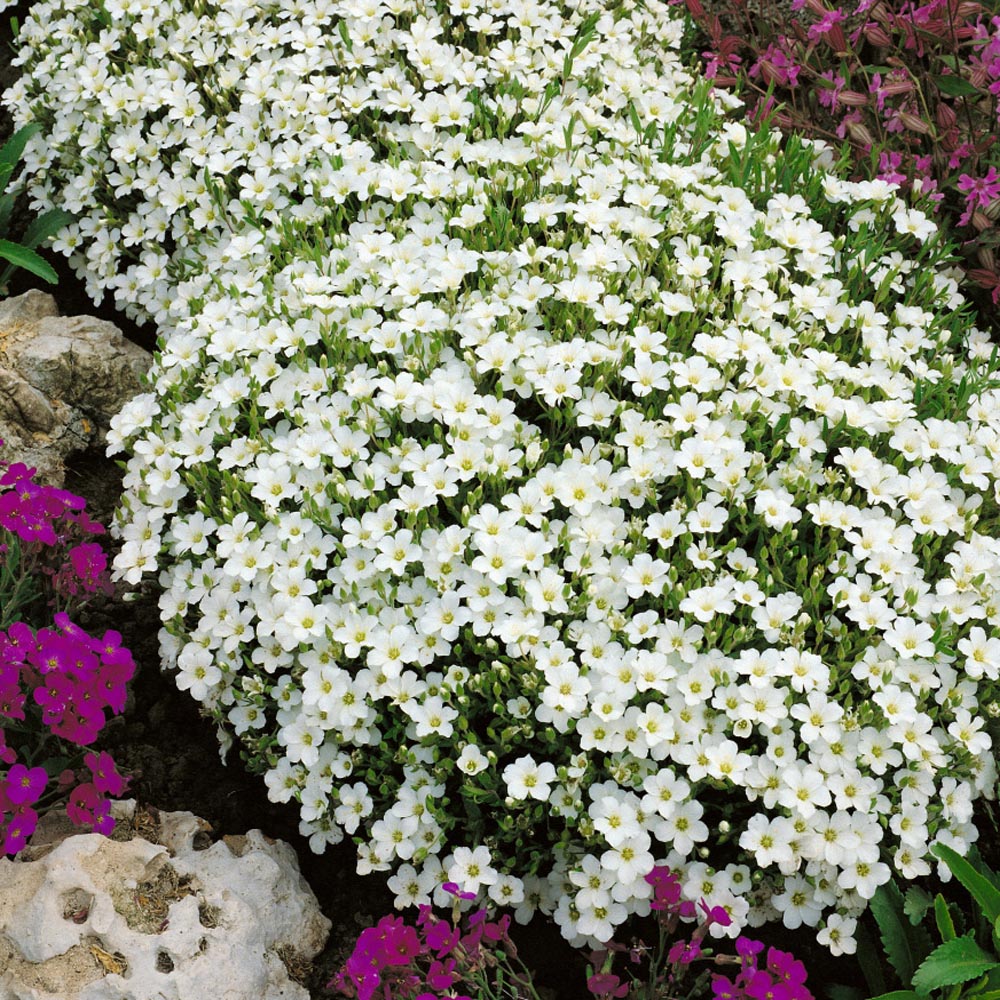
Great for edging paths, between flagstones, in walls, a ground cover, or trough gardens. Plants prefer well-drained soil and full sun to partial shade. Divide these ground cover plants in spring or early fall.
Sow seeds indoors 4-6 weeks before last frost. Transplant seedlings when danger of frost as passed. Arenaria ground cover plants are fairly drought tolerant once established. Sometimes they are used as a lawn substitute. Zones 3-8, grows about 4 inches tall.
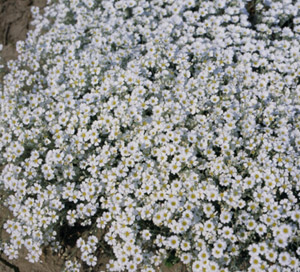
Vigorous spreading groundcover for walls or rockery, white flowers, silver foliage, late spring. Perennial, best suited for zones 3-7.
Sow seeds indoors 6 - 8 weeks before setting out. Use small pots and sterile starter mix. Sow Cerastium seeds lightly on the surface of the starter mix, and press the seeds into the mix. This ground cover seed needs light to germinate. Keep the seeds moist until germination, harden the seedlings for 10-14 days before planting plants into their permanent location. Space plants about 8" apart.

It performs well even in full shade, and it loves to cascade down a stone wall or spill over the sides of containers. The plant also makes charming hanging baskets. This trailing vine takes very little maintenance except for regular waterings, and being cut back and deadheaded before setting seeds.
It is a prolific self-sower, spreading its seeds all over the garden. To keep it more contained, deadheading is helpful. Kenilworth Ivy makes a very nice flowering ground cover plant. Ground cover plant that is also ideal for rockery. Perennial, hardy for zones 5-9, grows 4 inches tall.
Sow seeds indoors 10 weeks before the last frost is expected. Use starter trays, sow the ground cover seeds on the surface of sterile soil, gently pressing the seed into the soil.
Do not cover the seeds. They need light to germinate. After danger of frost has passed, transplant the young ground cover plants into the garden.
Average germination time is 14-24 days.
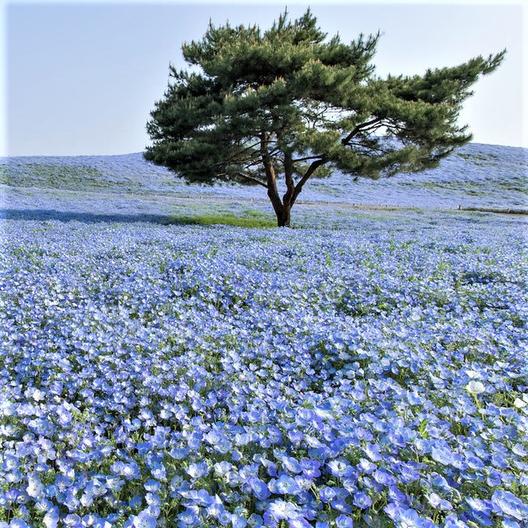
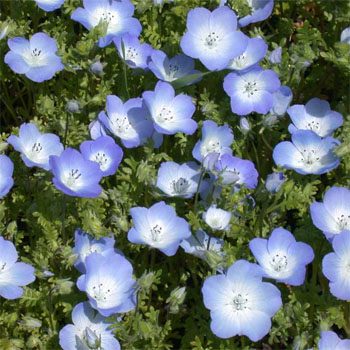
Prefers partial shade, but in cooler climates can tolerate full sun. A charmer in wooden barrels and hanging baskets, wonderful flowerbed plant.
Also excellent for borders, rock gardens, hanging baskets. An enjoyable and easily grown variety from seed.
This low growing plant requires little maintenance. Does not transplant well.
Seedman Basic Info:
Grows 6-12 inches tall, will germinate in about 7-30 days depending on soil and weather conditions, does not germinate well in hot weather, germinates best if soil temperature is in the 55°F to 65°F range.
Cover seeds about 1/8" deep, blooms from March to May.
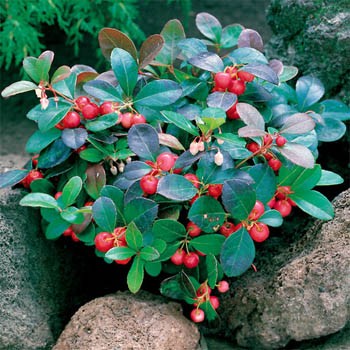
In the summer it has sweet little bell-shaped flowers, and in the fall and winter, it has lovely red berries. This creeping wintergreen offers year round visual interest!
This aromatic little ground cover plant is not only attractive, but it also has a history of medicinal uses. It contains methyl salicylate, a medicine related to aspirin, and has been used in medicines for both internal and topical use.
Great for fall or winter pot. Grows 6 inches tall, hardy for zones 4-7, perennial.
Seeds germinate best after a cold treatment. It is recommended to refrigerate seeds 4-10 weeks as the cold temperature helps to break the dormancy of the seed. Remove seeds from the refrigerator and sow them directly in a prepared seedbed. Plants prefer somewhat acidic soil and soil that has lots of organic matter worked in.
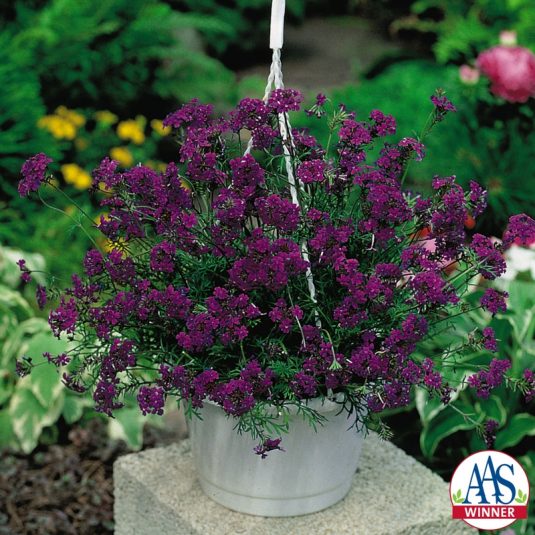
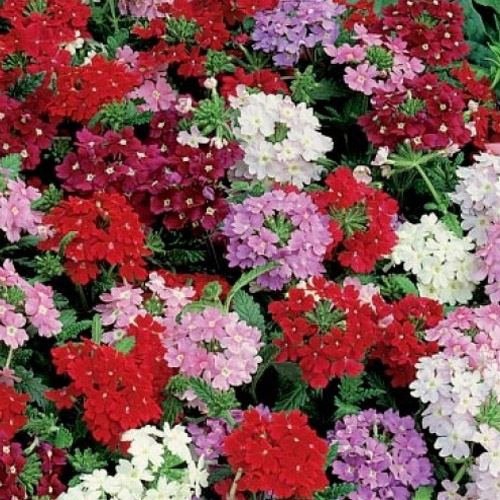
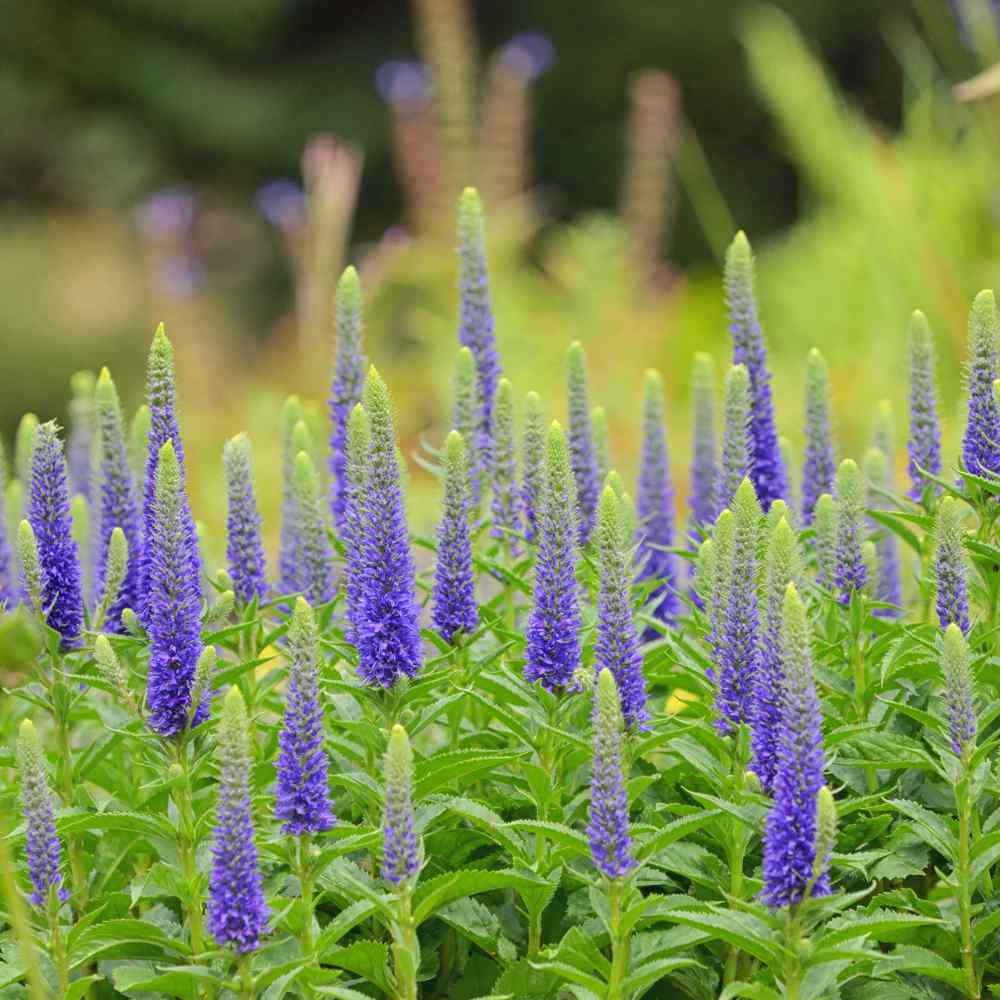
A hardy perennial that performs in sunny conditions and tolerates partial shade. It's not too picky about soil, but it does need to have good drainage. The plant requires a moderate amount of water, and it blooms best when the spent flower heads are trimmed back. It is fairly resistant to both deer and rabbits.
A perennial for zones 3-8, growing 4 to 6 inches tall.
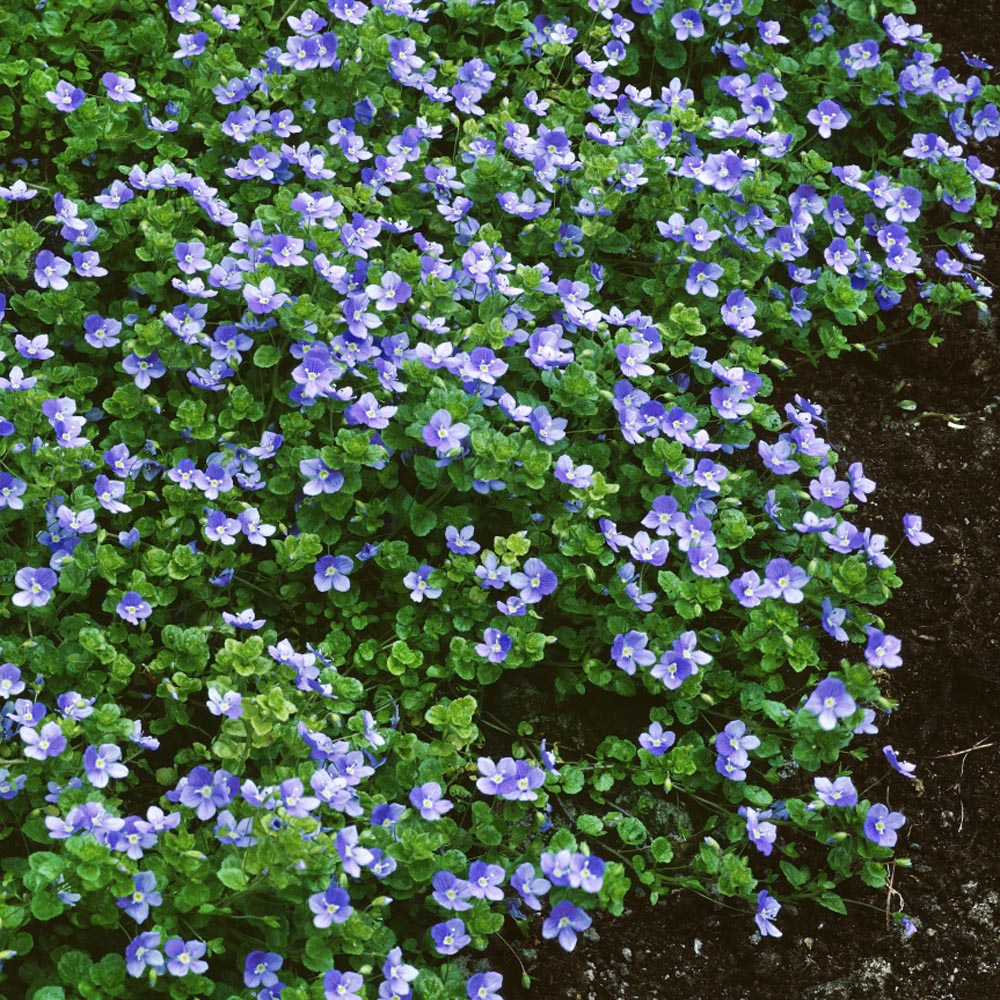
It is truly a low-growing ground cover plant that only reaches a height of 1 to 2 inches. In the spring and early summer it is adorned with masses of soft, light blue flowers. This plant will spread and flourish in your flower bed or work perfectly between stepping stones or in a rock garden. Veronica Repens is considered to be an alpine plant and can perform at elevations up to 7500 feet. It will tolerate light foot traffic and deer usually will avoid the little plants.
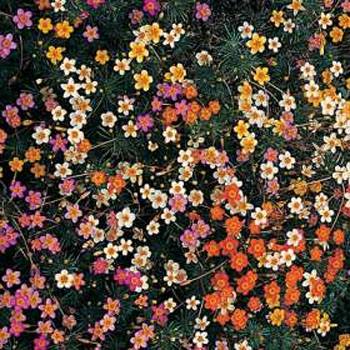
Leptosiphon uses include edging the front of the flower bed, containers, edging a pathway, or as a ground cover.
Commonly known as False Baby Stars, this annual is lovely if it is allowed to spill over the edges of rocks or containers. It makes a carpet of color and is stunning!
Annual plant growing 4 inches tall.
Start inside in cells or sow seeds directly outside in a prepared seedbed after frost danger has passed. Press the seed into the soil and lightly cover. Perform best in full sun, and they prefer rich, well-draining soil.

It is a low-growing, mat-forming annual that spreads 12-18 inches making it ideal for a summer ground cover. The trailing little plants create a profusion of 3/4 inch semi-double orange flowers with dark centers. They look like mini-sunflowers! Best in zones 6-9.
Creeping Zinnia offers the most spectacular blooms when planted in full sun. It prefers light, sandy loam soils with good drainage. It performs the best in areas where summers are mild.
The plants are ideal for hanging baskets, all sorts of pots and planters, edging the front of the flower border and as a ground cover. Annual growing 6 inches tall.
For best results, sow seeds directly in the garden 1 - 2 weeks before last frost date. They also may be started indoors 4-6 weeks earlier; however, plants often do not transplant well into the garden.
Seeds started indoors directly into a hanging basket or container avoids the transplant problem. Sow seed on the surface of prepared soil, lightly sprinkle peat moss to help hold moisture in the seeds. Light is beneficial to germination.
Make sure that the ground cover seeds stay moist until germination occurs.

A plant of many uses, mass as a ground cover for small areas. Filler between stepping stones. Leave undisturbed and allow it to spread in native plant gardens or naturalized areas. Rock gardens.
Highly decorative dark foliage, a "Walk on" plant. Perennial, hardy to zone 3.
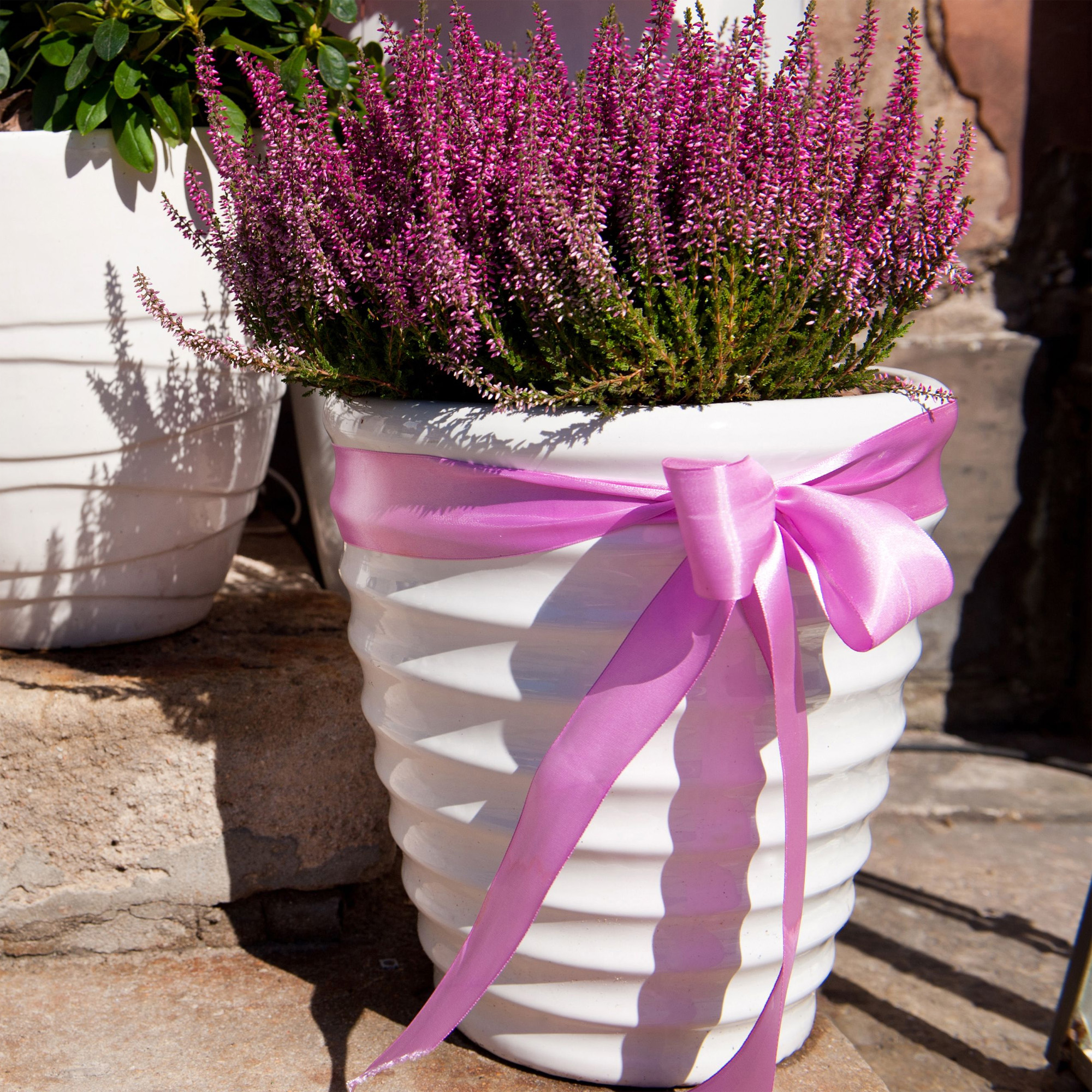
Heathers grow in nutrient poor, well-draining, acidic soils, in a bright sunny location. Calluna vulgaris will do very poorly in alkaline soils. When planting in the ground, space out the plants about 24 inches apart. Plant out in early fall or spring.
At spring, pruning of the dead dry stems produces fresher looking plants, cut the old stems off close to the ground. It is recommended to mulch before the onset of winter to protect from damage caused by the cold temperatures and wind.
Heather seeds are very small and should be surface sown and the soil needs to remain moist, with watering best done from below if possible.
Grows to about 24-36 inches tall. Normally takes about 28-35 days to germinate in 50-72 degree soil.

Can be used in wooden barrels, containers of all types, as a groundcover, borders, rock gardens.
Seedman Basic Info:
Grows 6-12 inches tall, will germinate in about 7-30 days depending on soil and weather conditions, does not germinate well in hot weather, germinates best if soil temperature is in the 55°F to 65°F range.
Cover seeds about 1/8" deep, blooms from March to May.
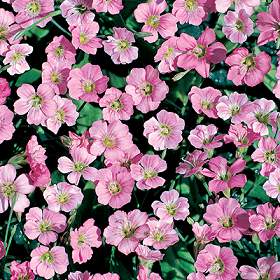
Drought and heat resistant and thrives on neglect, easy to grow and vigorous but not invasive. Can tolerate light foot traffic. Teeming 1" veined pink blossoms, great ground cover or edging, blooms first year. Perennial growing 12 inches tall, hardy for zones 5-9.
Perennial,hardy for zones 4-9, grows 6 inches tall.
Plant seeds indoors 4-6 weeks before last frost is predicted. Use starter trays and sterile potting mix. Press the seeds into the soil but do not cover the seeds. Keep the ground cover seeds moist but not saturated until germination occurs.
Transplant outdoors, 12-18 inches a part when temperatures are warmed. Find a sunny location with sandy, sharp-draining soil. In the hottest climates, plants would do well with some afternoon shade.
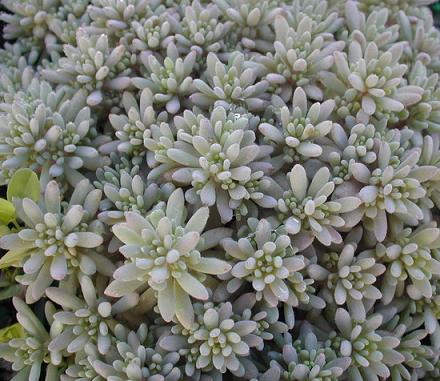
As the weather warms, the foliage turns to a blue-grey color, and it has a soft feathery feel to it. In late spring to summer it has clusters of small whitish pink blooms.
It is a tough ground cover plant that tolerates some wear and tear such as light walking.
Commonly called Spanish Stonecrop, and although it is a sun lover in mild climates, this perennial prefers some afternoon shade in areas with extremely hot summers.
Porous well-drained soil is essential. Grow in coarse sandy or gravelly soil in a rock garden, trough, wall, or container, or use it as a small-scale ground cover on a slope or bank. In too much shade it slowly dwindles or is overtaken by neighboring plants.
Best suited for zones 4-9.
Sedum has tiny seeds which should be mixed with fine sand for an even sowing. For best results, sow seeds indoors 6-8 weeks before the last frost is expected. Use small pots or flats and sterile starter mix. Pre-moisten the starter mix and sow Sedum seeds on the surface. Press the seed into the moistened soil, and do not it. Keep the Stonecrop seeds moist but not saturated until they germinate.
Water from the underside of the pots or use a spray bottle and lightly mist the seeds. Plant the Sedum seedlings outdoors once sufficient growth has been made. Established plants can be divided every 3-4 years for best performance.
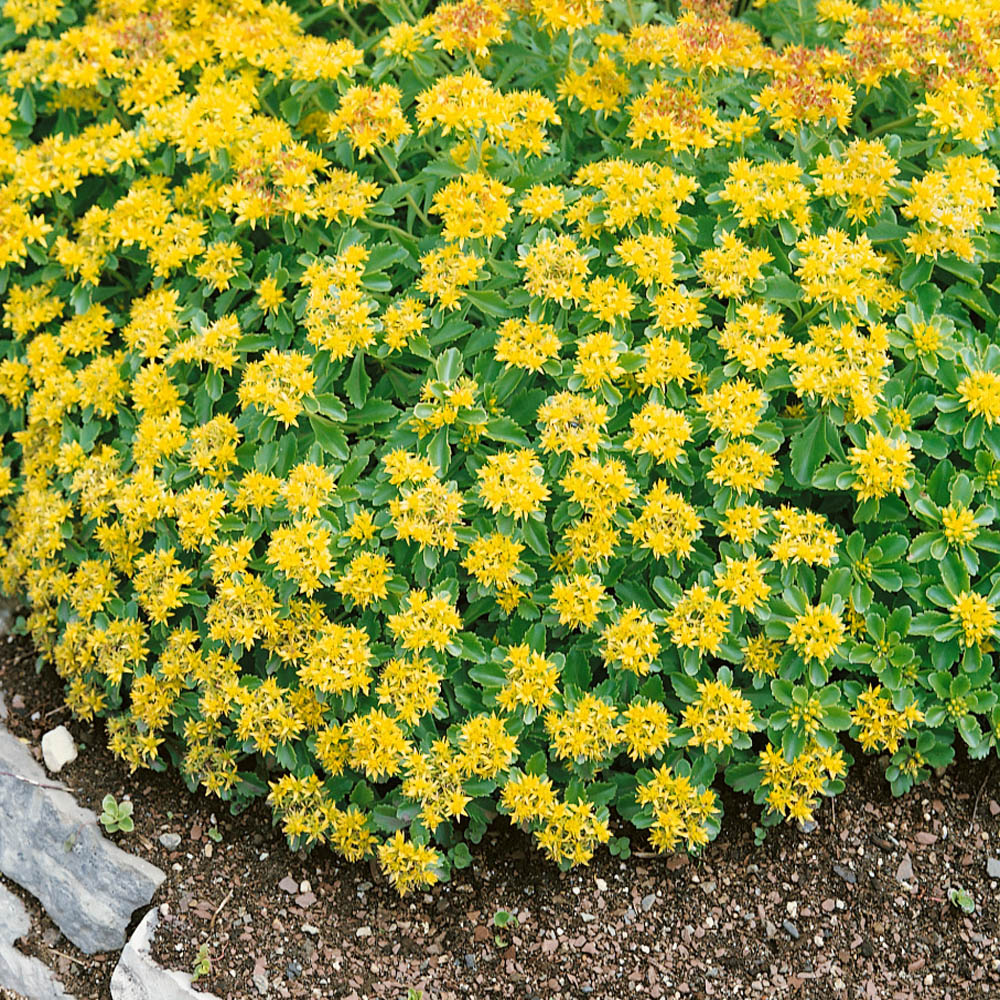

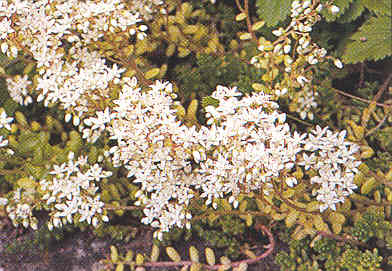
These leaves grow close together and form a dense carpet of plant material which spreads to cover a good-sized area. Dainty, airy white flowers bloom in midsummer. Foliage persists throughout the winter months, but turns red to bronze as temperatures become cooler.
A perennial for zones 3-9.
Sedum seeds should be started indoors and transplanted outdoors after germination. Indoor sowing can be done 6-8 weeks before last frost date. Use small pots or flats and sterile starter mix.
Pre-moisten the starter mix and sow 5-7 Stonecrop seeds per container. The seeds are exceptionally small, so only press the ground cover seed into the moistened soil, and do not cover the seed. Keep the seeds moist but not saturated until they germinate.
For outdoor sowing, wait until garden soil temperatures are 70°F. Select a site with well-draining soil. If necessary amend soil with organic matter. Loosen the top 1-2 inches of soil, remove any weeds, and gently broadcast the seeds over the soil.
Lightly press the seeds into the soil, and keep the seed continuously moist until germination. Normal germination time is 14-28 days. As a rule of thumb, 2,000 sedum seeds will cover a 40 square foot area as a ground cover.
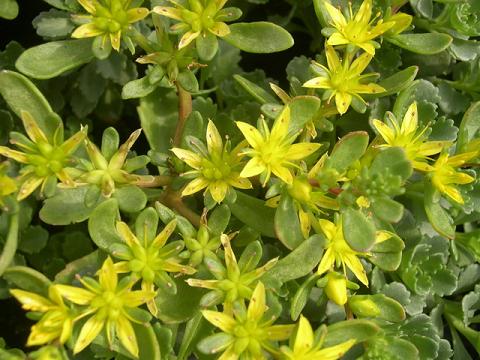
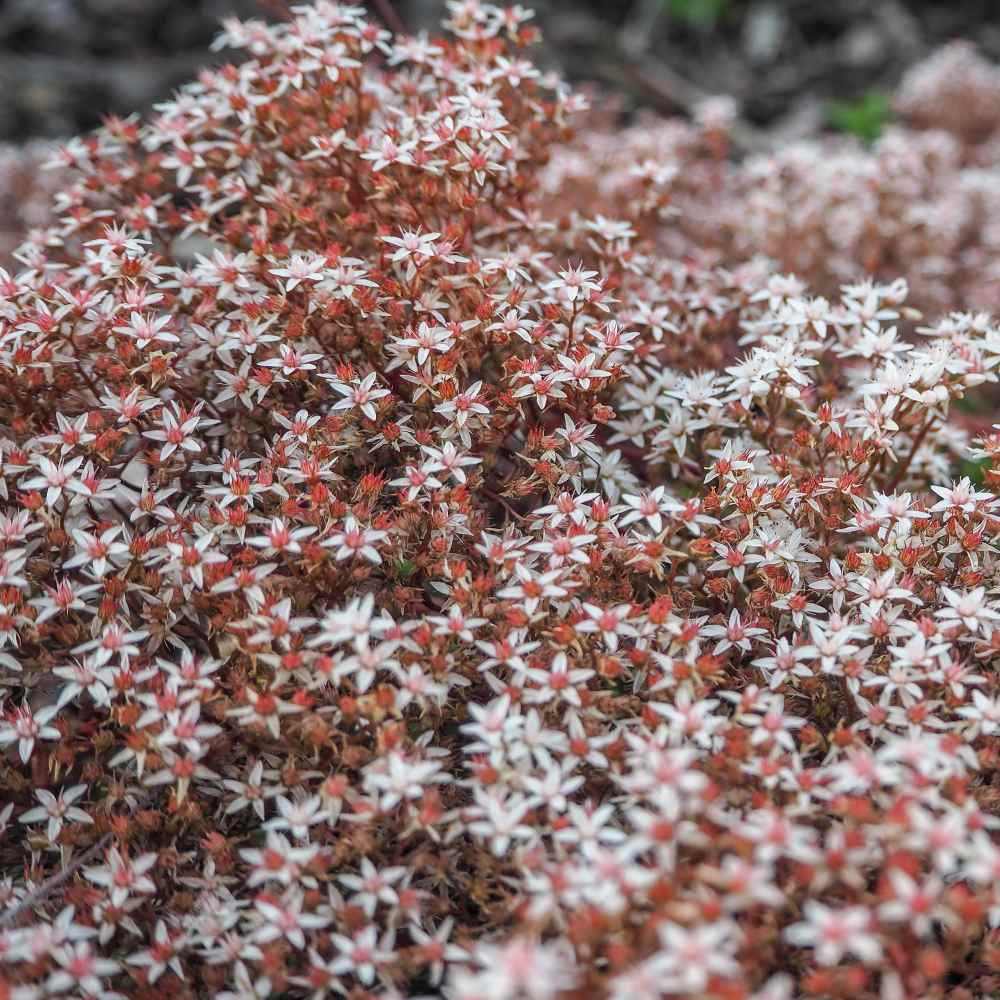
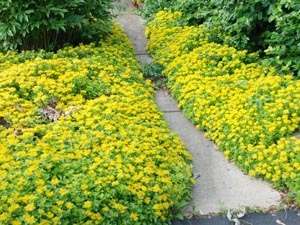
These plants will add distinction and beauty to any flower garden, rock garden, container, or planter box. They form a luxurious mound of dark green leaves that stay attractive 3 seasons of the year. As soon as summer arrives, hundreds of sunny yellow flowers will cover the attractive foliage. When Autumn approaches, the foliage takes on a soft pinkish hue.
For zones 4-9, grows about 4-6 inches tall.
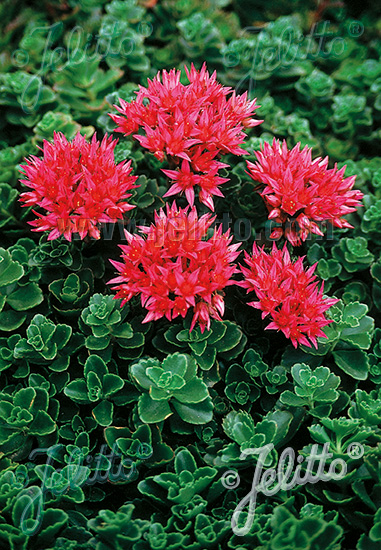
A low growing succulent plant that thrives in well-drained soil but will grow in most soil types. It's perfect to grow in trouble areas. Deer resistant.
For zones 5-10.
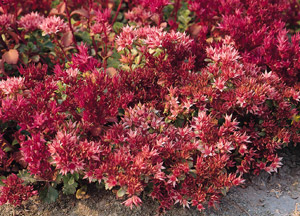
Dragon's Blood Sedum is a fast growing ground cover with brilliant red flowers in late summer. It is a succulent with needle-like leaves that turn an orange-red color in fall. Dragon's Blood ground cover creates a dense mat 3 - 5 inches tall that spreads quickly. Dragon's Blood will tolerate poor, dry soil. Low growing Sedum is used for containers, borders, edging and as a dense spreading ground cover plant. A perennial, these plants are great in rock gardens as they will grow in shallow, poor soil and perform well. Dragon's Blood seeds can be sown indoors or directly outdoors ( but you will get best results by starting indoors and transplanting outside ). Indoor sowing can be done 6 - 8 weeks before last frost date. Use small pots or flats and sterile starter mix. Pre-moisten the starter mix and sow 5 - 7 Sedum ground cover seeds per container. The Sedum seeds are exceptionally small, so only press the seed into the moistened soil, and do not cover the seed. Keep the seeds moist but not saturated until they germinate. For outdoor sowing, wait until garden soil temperatures are 70 degrees or higher. Select a site with well-draining soil. If necessary amend soil organic matter. Loosen the top 1 - 2 inches of soil, remove any weeds, and gently broadcast the Dragon's Blood seeds over the soil. Lightly press the seeds into the soil, and keep the seed continuously moist until germination. Perennial growing 6" tall, hardy for zones 3-9.

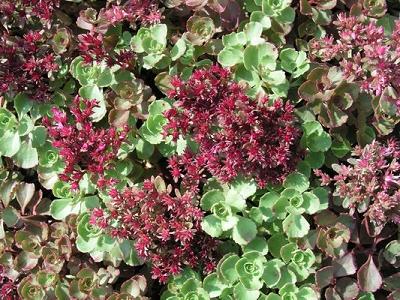
Has deep rose pink flowering clusters that will bloom from mid-summer until fall. Has very narrow paddle-shaped leaves that spiral around and form dense mats. The foliage may turn a brownish-red color in the autumn in full sun.
Plants forms a thick ground cover even the first year that it is grown from seeds.
For zones 5-9.
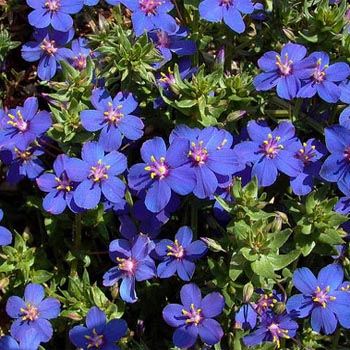
This caerulea variety of Anagallis is not as famous as Scarlet Pimpernel, but you cannot go wrong with adding this blue version to your flower garden. The Blue Pimpernel plant establishes easily and quickly grows and spreads to produce nice ground cover plants.
How To Grow Blue Pimpernel: Sow Pimpernel seeds in peat pots and gently press the ground cover seed into soil and barely cover. Pimpernel seeds need light to germinate. You can also directly sow Anagallis Arvensis seeds after all danger of frost has passed in groups of 3-4 seeds spaced 12 inches apart. Thin to the strongest plant. If consumed, Pimpernel ground cover plants can be toxic to livestock and humans.

How To Grow Pimpernel: Sow Pimpernel seeds in peat pots and gently press the ground cover seed into soil and barely cover. Pimpernel seeds need light to germinate. You can also directly sow Anagallis Arvensis seeds after all danger of frost has passed in groups of 3-4 seeds spaced 12 inches apart. Thin to the strongest plant. If consumed, Pimpernel ground cover plants can be toxic to livestock and humans.
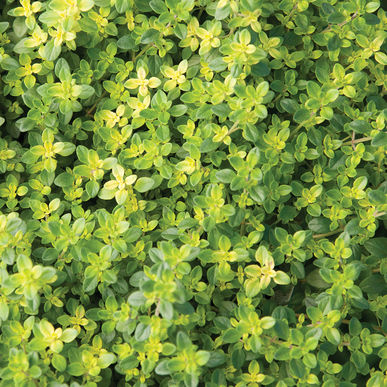
The most fragrant type, thick mats of perfumed rose purple flowers. Lemony flavor used in cooking and cough remedies. Grows about 4" tall.
Also known as Broad-leaved thyme, it is a perennial evergreen plant, mostly used as edible plant and can be also used as fragrant ornamental plant, can grow in temperate, subtropical or mediterranean climate and growing in hardiness zone 5-10. Very tiny seeds!


Perfect for edging the flower border, rock gardens, walkways, patios and in containers. The plants are full of tiny lilac pink clusters of blooms that are attractive to butterflies. The groundcover is lemen-scented, and it is a maintenance free, hardy plant that will give years of beauty and enjoyment.
For zones 4-8.
Sow the seeds in starter trays indoors 6 weeks before the last expected frost. Press the Thyme seeds into the soil but do not cover them. Transplant the young seedlings into the garden 12 inches apart. After frost danger has passed, creeping thyme seeds can be directly seeded in a prepared seed bed that is weed free and has had the top several inches loosened and raked fine.
Outside: scatter the seeds and press them firmly into the soil. The ground cover seeds must be consistently kept moist. If weeds grow along with the thyme, it's best to hand pull them.
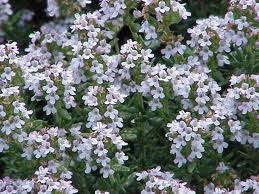
It even makes a pretty patch of small ground cover. Growing thyme provides an anchor in an herb garden in areas where it is evergreen in winter. Thyme is also perfect for containers, either alone or in combination with plants that won't shade it out.
It is not only attractive in the perennial border or herb garden, but it also attracts birds, bees and butterflies to the garden as well. It is also commonly referred to as Garden Thyme or English Thyme.
This variety is often planted near vegetables to help control flea beetles and several cabbage pests.
A perennial for zones 4-9.
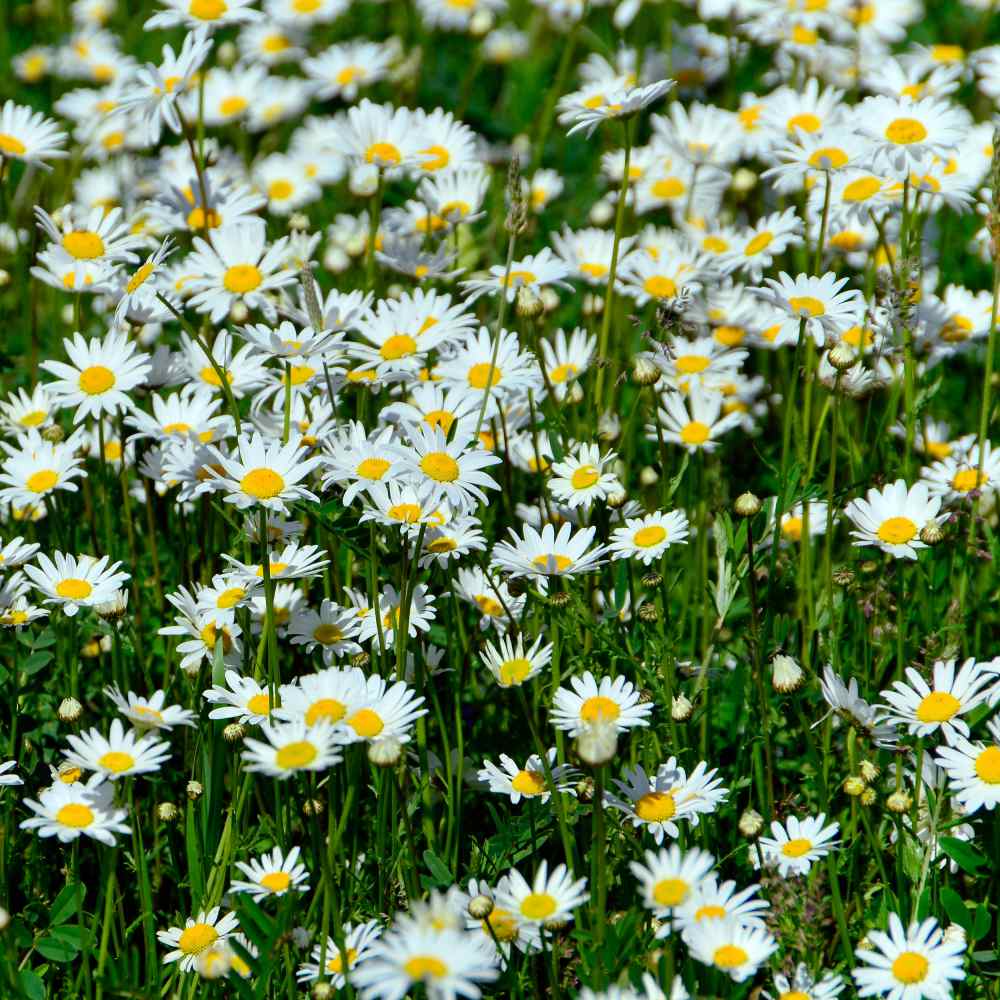
This herbal carpet can even be used as a lawn substitute. This species is grown for the famous British Chamomile lawns.
Roman Chamomile plants may deteriorate in very cold or wet winters, but they will most likely recover. Harvest chamomile flowers when they are first fully opened. Use them fresh or freeze them for later use. Another benefit is that the flowers are used in herbal teas and are said to have medicinal properties.
Often used as a ground cover, Roman Chamomile holds soil in place even on slopes, it spreads to fill in gaps, and it blocks out most weeds. It can be mowed (after flowering and set the mower on the highest setting), and it tolerates light foot traffic. This ground cover is unique, aromatic, attractive and is well-suited for covering large areas and can be started by sowing the herb seeds ( Sow on cultivated soil. Sowing Rate: Approximately 5,000 seeds covers 100 square feet. Average Germ Time: 7 - 10 days. Keep moist until germination. Depth: Surface sow, cover lightly with peat moss. )
Attracts honeybees and birds. Young leaves and flowers can be gathered to make a calming tea, both fresh and dried.
Grows well in zones 4-9.

The waxy leaf covering reduces transpiration so the plant can survive extended droughts and the stress of a drought only deepens the color of the ornamental grass. It is one of the shortest ornamental grasses available, with the foliage not exceeding 12 inches in height, so mowing is only needed to remove seed heads if desired. It has good winter color and looks green during this period.
It is very shade tolerant, often found in the dry shade of trees. Plant care includes cutting the plant back to 2 inches in the early spring. Trim flower heads to prevent self-sowing. This ornamental grass seems to prefer some neglect.
A perennial for zones 4-7.
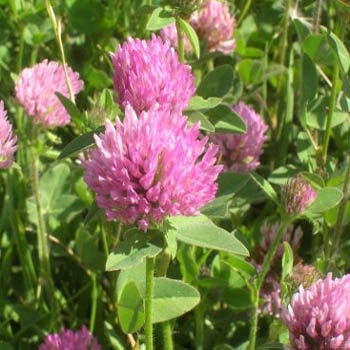
Whether sowing red clover seeds, planting young plants or digging and dividing mature plants, the goal is to plant when there will be the least amount of stress possible on the plant and/or roots during its establishment period. Sow red clover seeds onto tilled and moistened soil early in spring after the last frost has passed. Cover over the seeds with 1 to 2 inches of moist soil. Keep soil evenly moist but not wet, and you should see sprouts within 3 to 5 weeks. Red clover is an attractant to bees and butterflies, so planting early may beckon more of these visitors to the garden throughout the season.
1 pound will cover 1/10th of an acre.
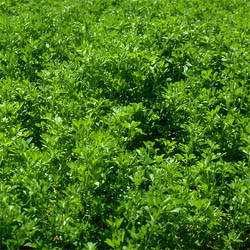
Here are some of the outstanding features of Vernal alfalfa:
Produces high yields even on fields where root rots are a problem.
Uniquely winterhardy, a full season variety with the winterhardiness of varieties adapted to the far north.
Wide spectrum pest resistance decreases yield fade in later stand years.
Very high yield potential, top performer in University yield trials.
Resists stem nematode problems common to lighter soils.
Very fast recovery and very good frequent cutting tolerance.
1 pound will cover 1/15th of an acre.
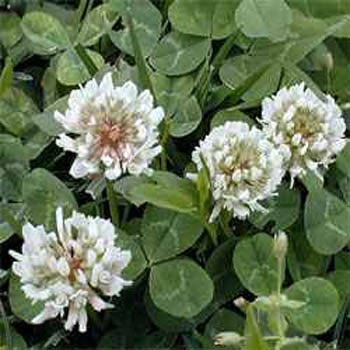
Many homeowners include White Dutch clover in their lawn seed mixture because clover sprouts fast and grows so dependably that it's a valuable aid in getting a new lawn started. White dutch clover is the most popular clover seed for lawn alteratives, due to the fact it is cheaper than miniclover.
1 pound will cover 3,000 sqare feet.


